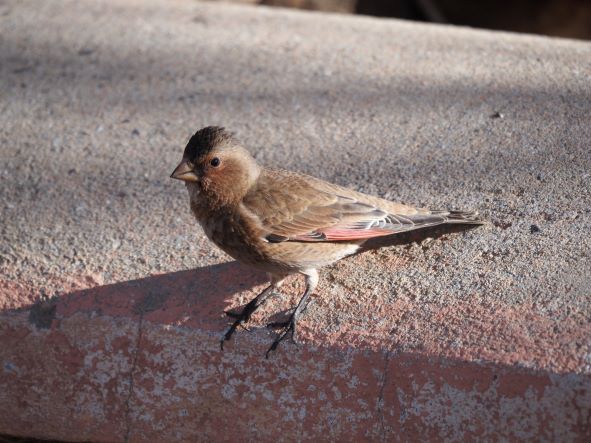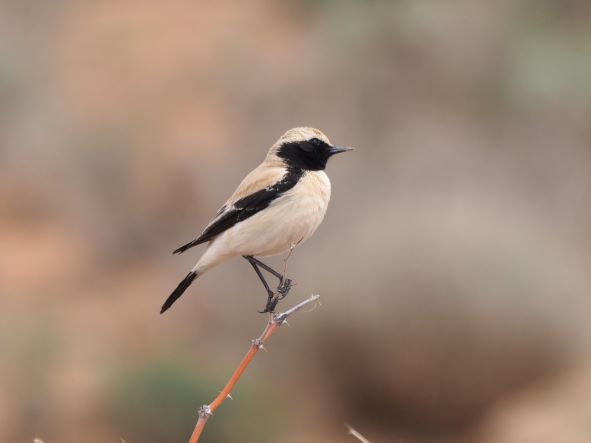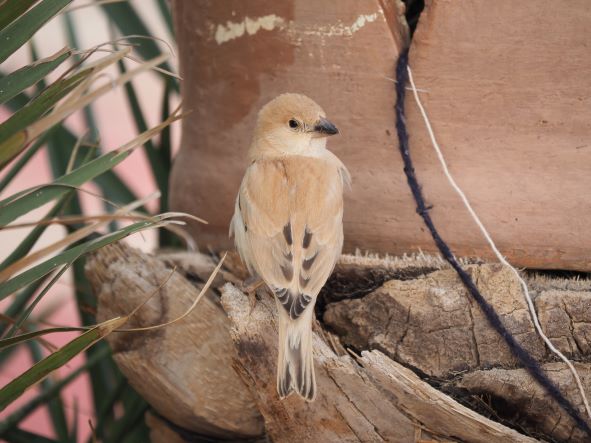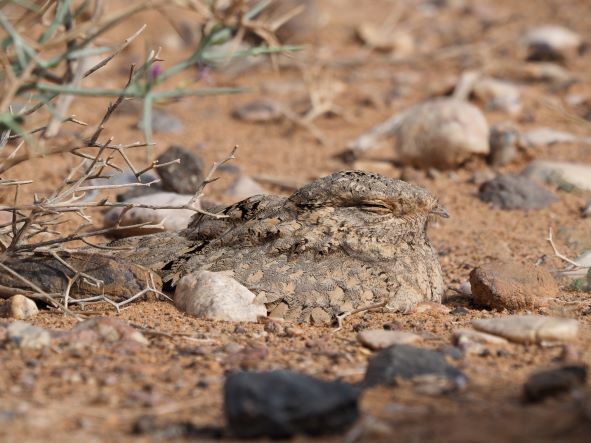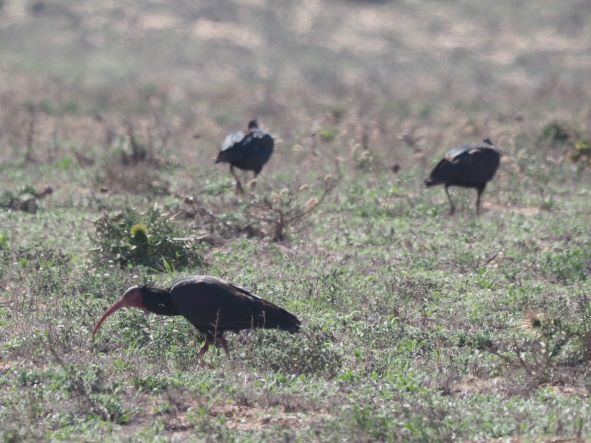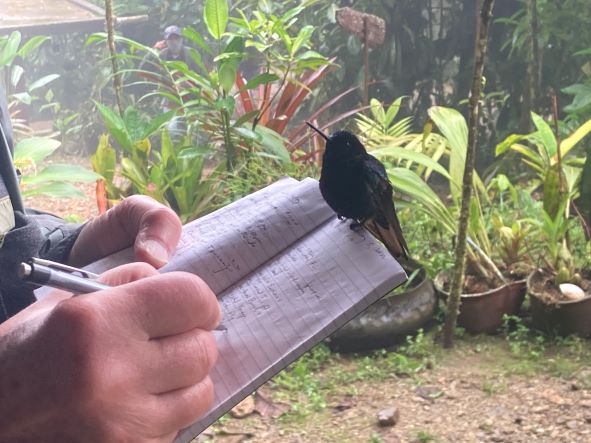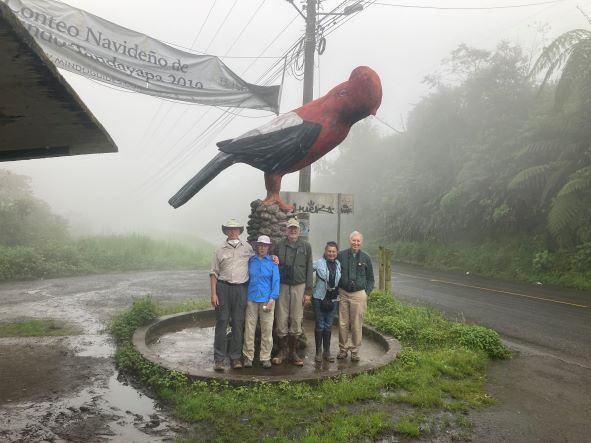From the Field
May 2:
Ethan Kistler reports from South Texas
After a several year hiatus, the recent Rio Grande Valley in Spring Texas tour ended in great success. We had a whole host of South Texas specialties from the more common Green Jay, Plain Chachalaca, and Altamira Oriole to the more uncommon Northern Beardless-Tyrannulet, Morelet’s Seedeater, and Red-billed Pigeon. We visited King Ranch where we had excellent views of Ferruginous Pygmy-Owl, the bird-rich Rio Grande Valley as far west as Zapata, and of course the coastal areas including South Padre Island for spring migrants. I’m really looking forward to spring 2023! (Photos by tour participant Keeley Kirkendall).
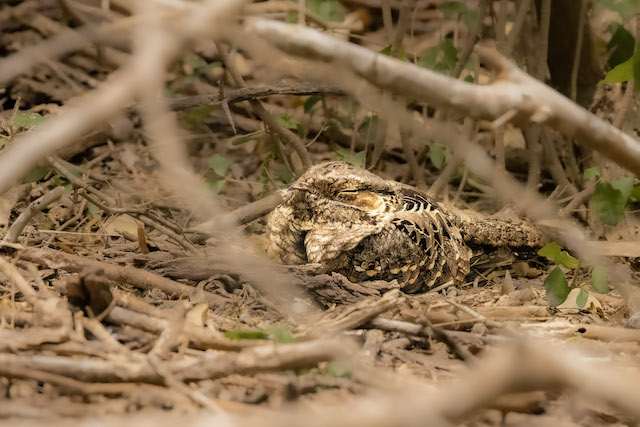
Common Pauraque near its usual roosting spot at Estero Llano Grande State Park
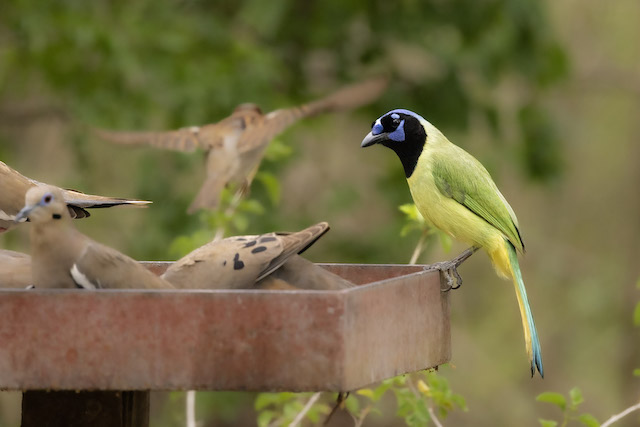
Green Jays are frequent at the valley's bird feeding stations
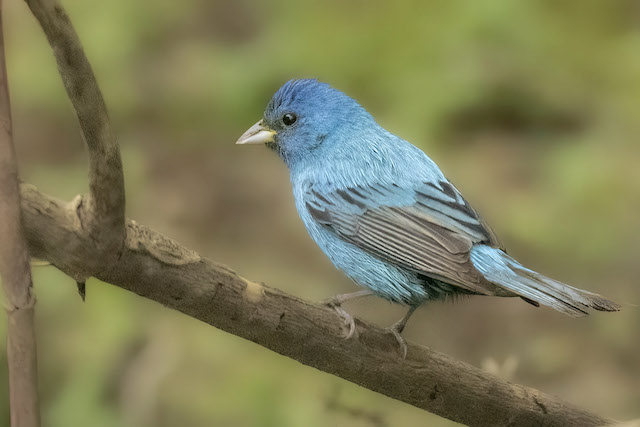
Indigo Bunting was one of many migrants seen on the tour
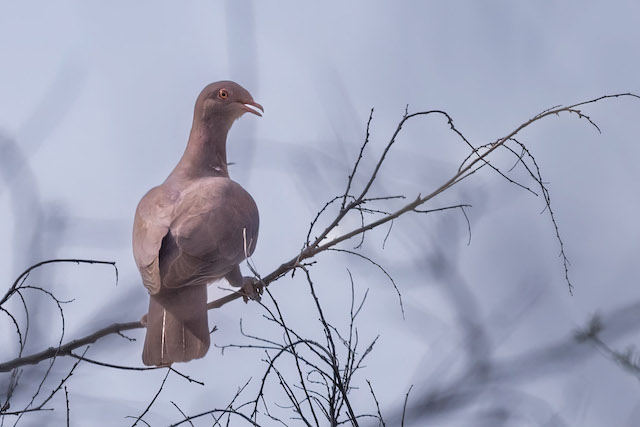
This Red-billed Pigeon flew right over our heads and landed in an nearby tree
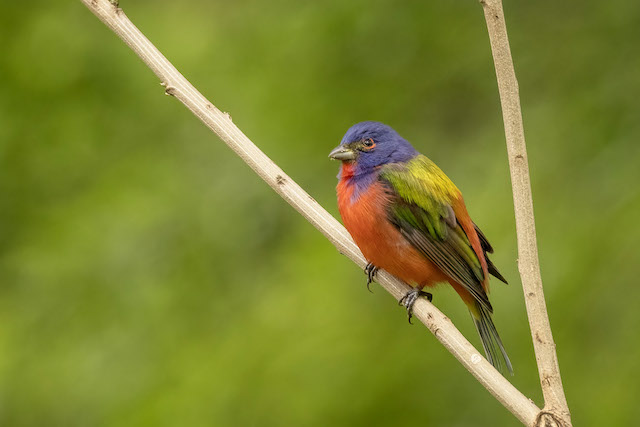
Although more widespread, this Painted Bunting was a target for many
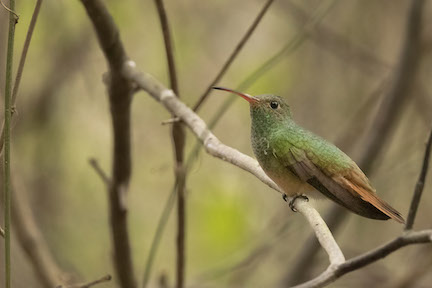
Buff-bellied Hummingbirds can be found frequenting feeders
April 13:
Gavin Bieber has just returned from spectacular Panama
Our recently completed spring week at Panama's famous Canopy Tower was followed by a 5-day extension to the Canopy Lodge. It is always a pleasure to return to these fantastic and unique lodges, surrounded by an excellent mix of habitats and a great diversity of birds. Some of the highlights during the main week around the tower included a very confiding male Spot-crowned Ant-Vireo, several woodcreepers including this handsome Plain-brown, dazzling tanagers such as Green Honeycreepers and Red-legged Honeycreepers and daily visits to the feeders from an array of hummingbirds including Stripe-throated Hermit. As usual our time around the national park here is punctuated by a plethora of non-bird finds as well, from tiny Crimson Threadtails and Golden-spectacled Tegus to obscure finds like courting Blue-spotted Cichlid or cryptic Panama Night Monkeys. Over the course of the main tour around the tower we tallied an impressive 286 species of birds in just 6 days!
Around the more montane forests surrounding the lodge we added nearly 90 more species to the triplist, with a few of the highlights being our incredibly lengthy views and close-range views of five Rufous-vented Ground-Cuckoos and a Black-crowned Antpitta attending antswarms around La Mesa. Along the creek that runs through the lodge property we found loafing Sunbittern, and at night tiny Tatayo’s Glass Frogs. The lodge grounds held glittering Snowy-bellied Hummingbirds, Barred Antshrikes, and Giant Red-winged Grasshoppers that seemed to dwarf some of the birds. Our final day of the extension was to the hot and dry Pacific lowlands, where among an impressive list of new species we enjoyed very good views of Pearl Kite and the surprisingly attractive Lesser Yellow-headed Vulture.
In all we tallied just shy of 380 species of birds, including an amazing 52 species of flycatchers, as well as 17 mammals and 27 species of reptiles and amphibians in 10 days in the field! This tour continues to impress me, as the diversity and richness of the region, paired with ease of access and the comforts of the lodge make for a truly wonderful experience.
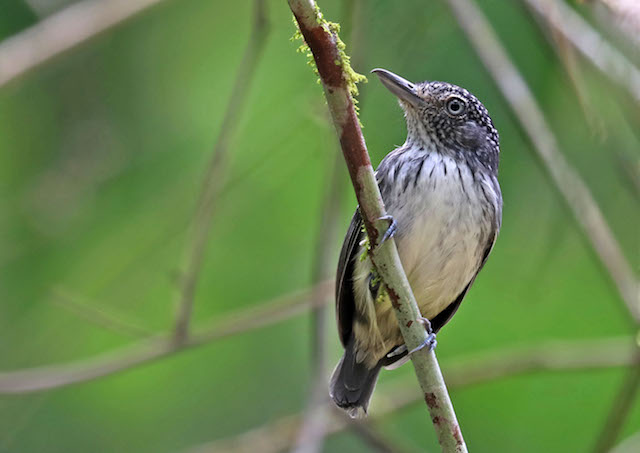
Spot-crowned Antvireo (Male)
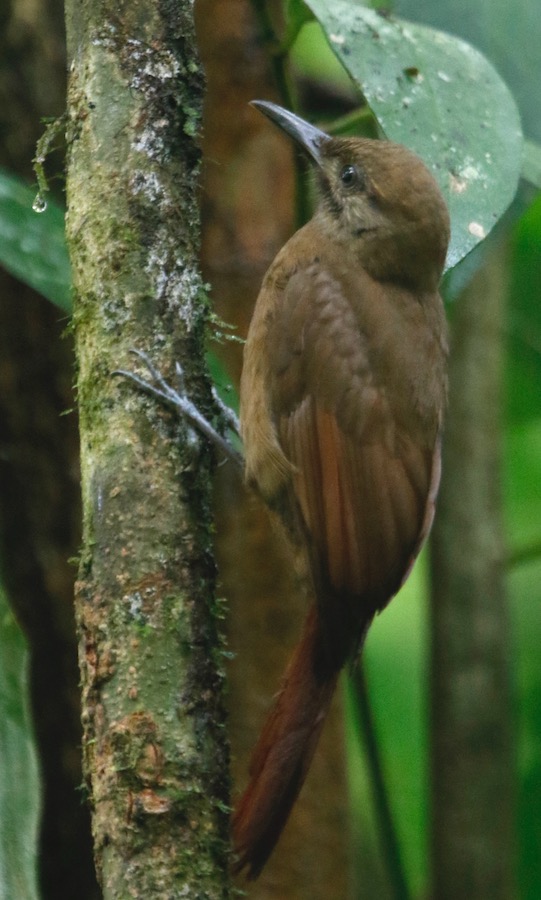
Plain-brown Woodcreeper
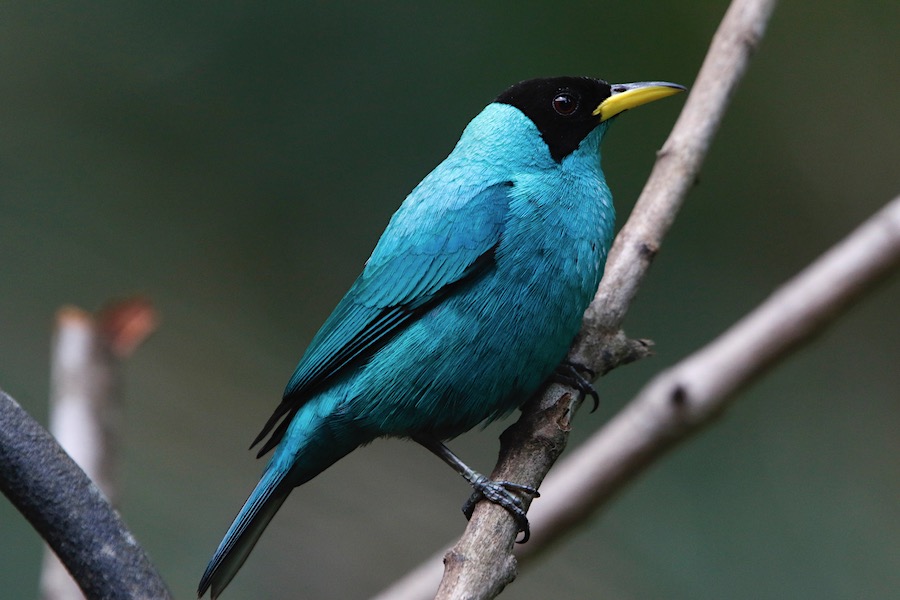
Green Honeycreeper
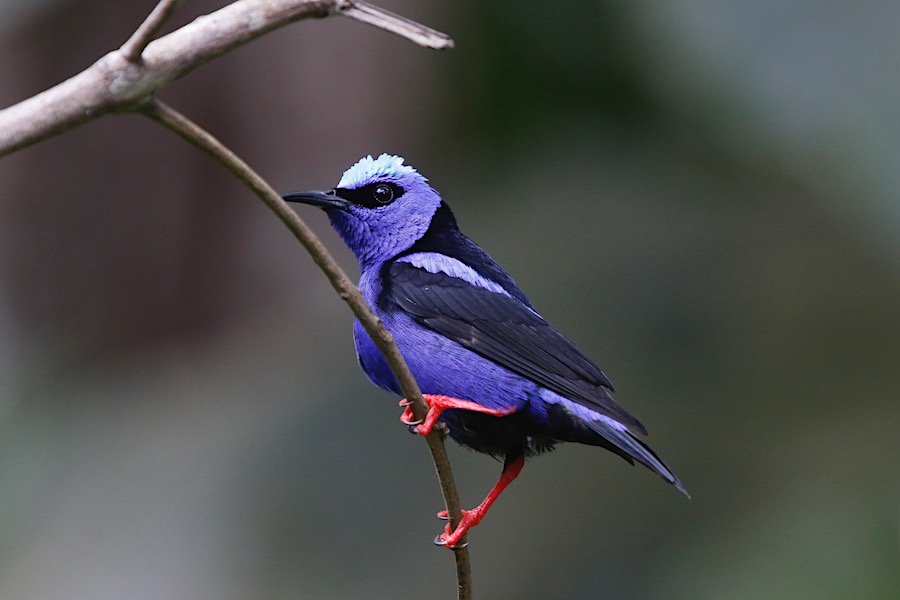
Red-legged Honeycreeper
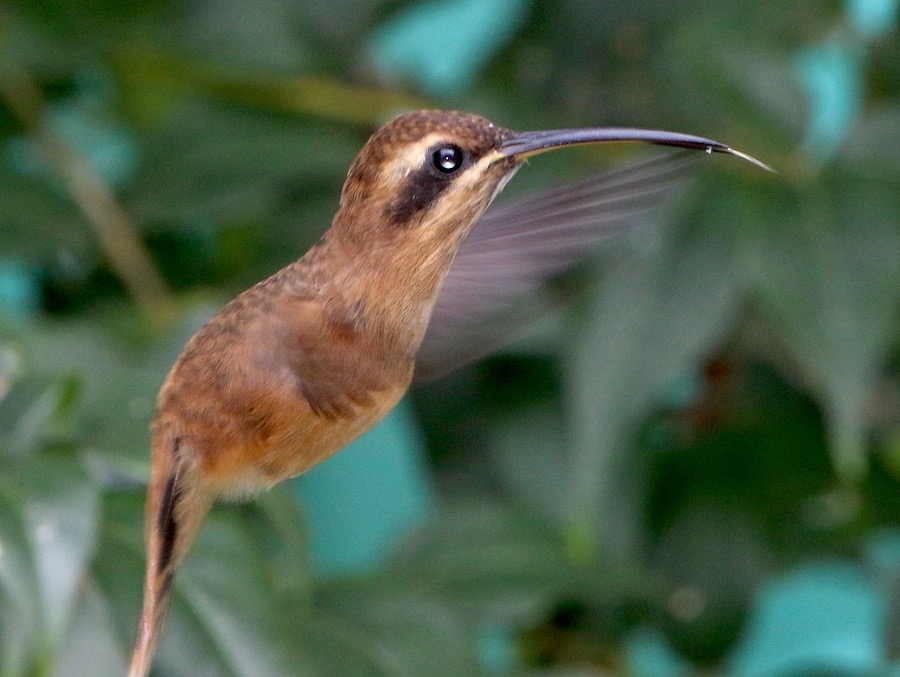
Stripe-throated Hermit
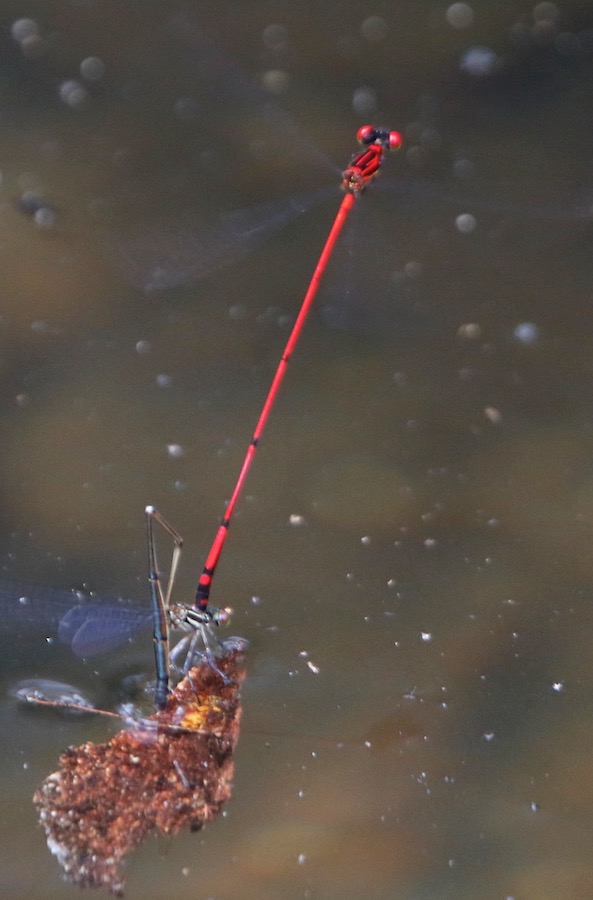
Crimson Threadtail
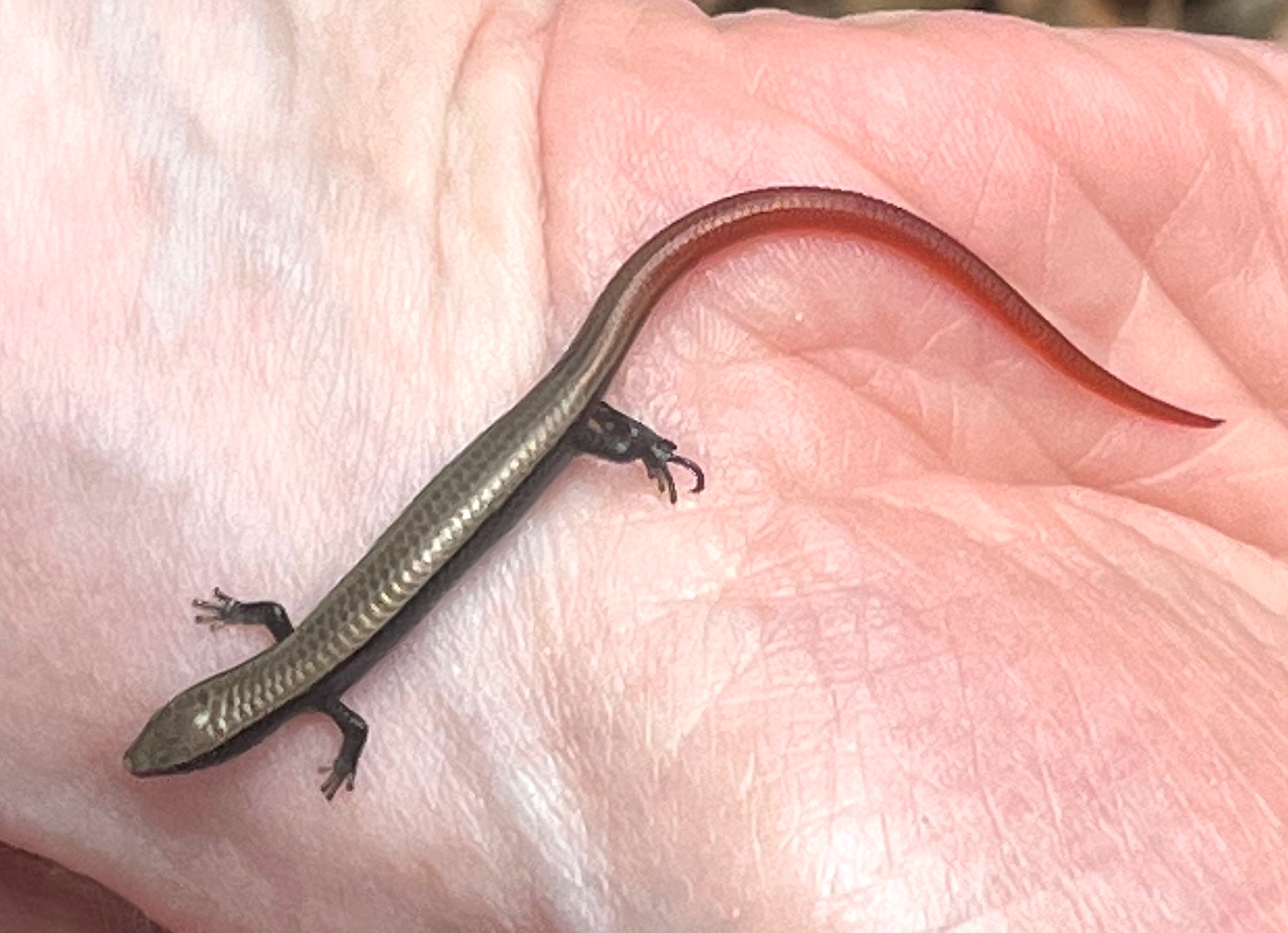
Golden-spectacled Tegu
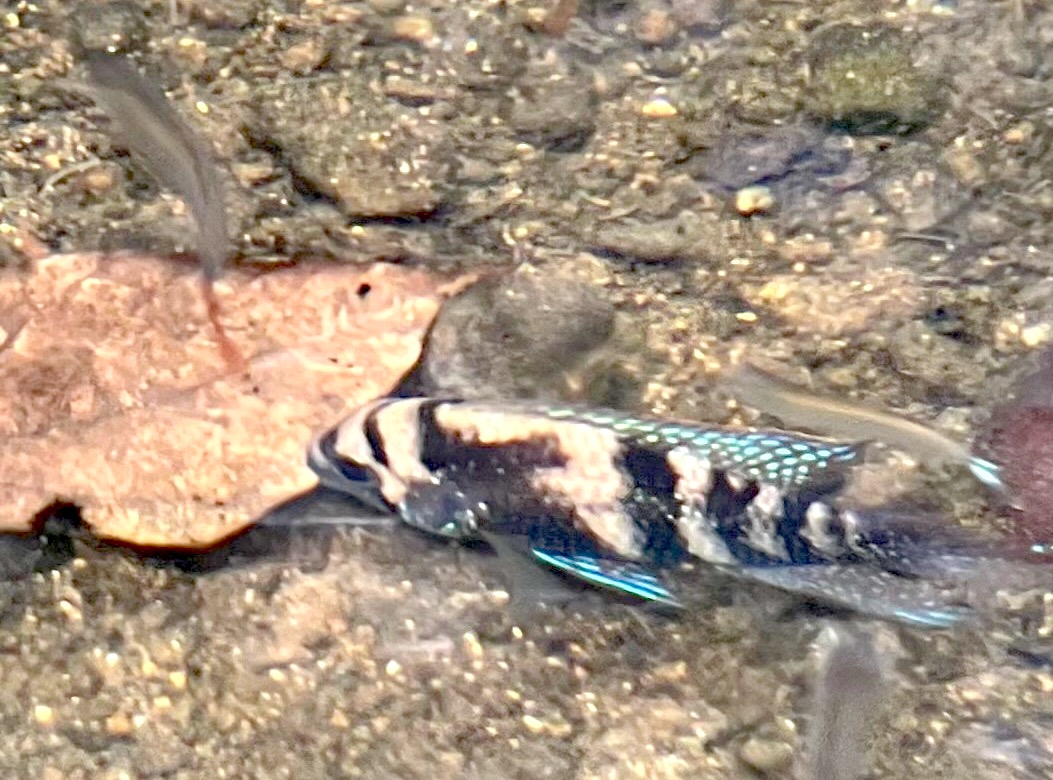
Blue-spotted Cichlid
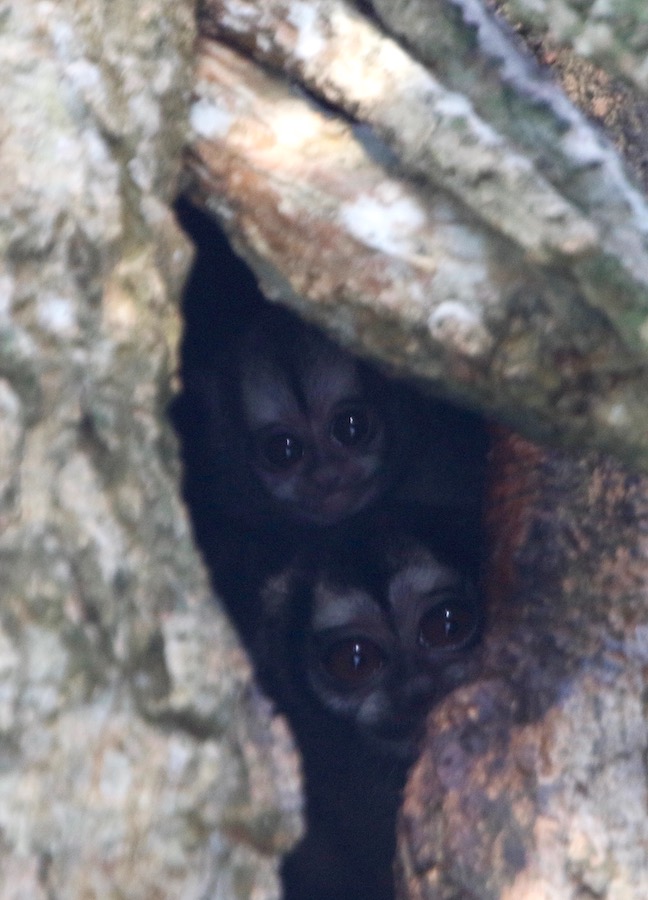
Panama Night Monkeys
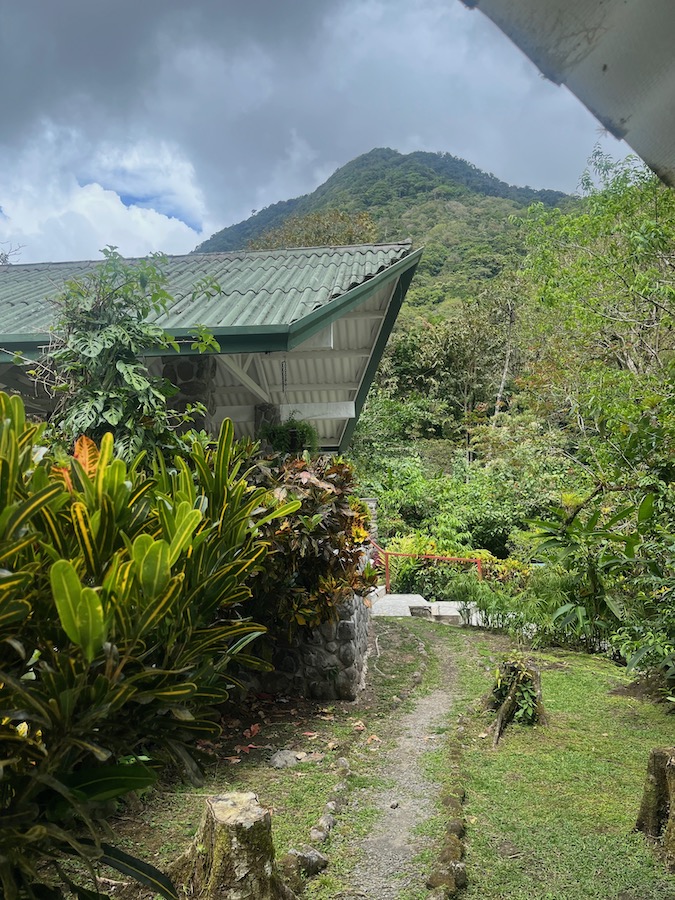
Canopy Lodge
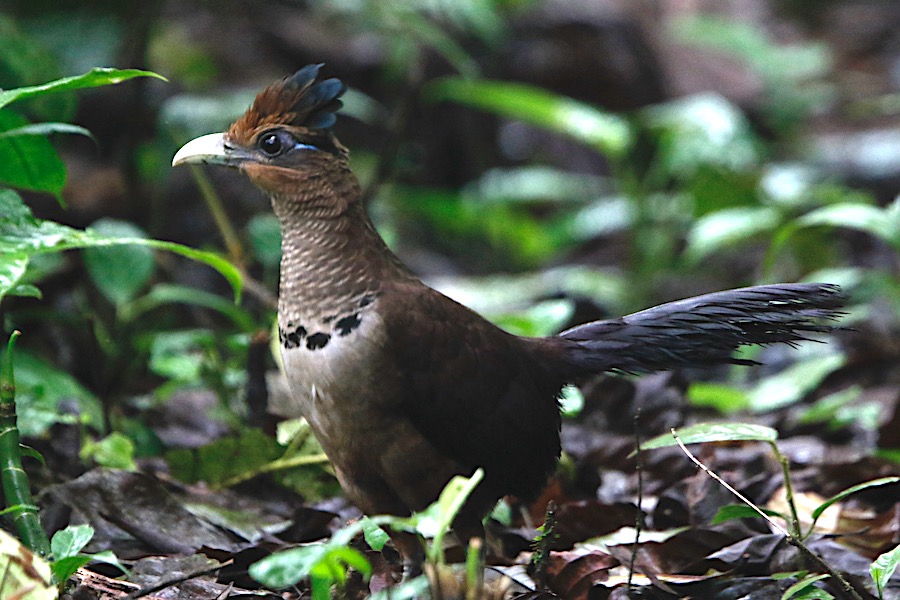
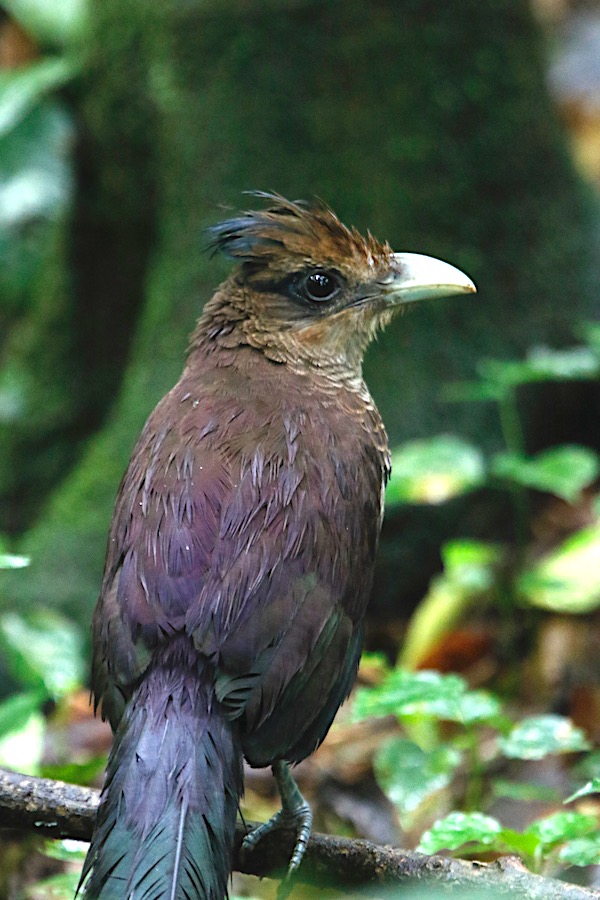
Rufous-vented Ground-Cuckoo
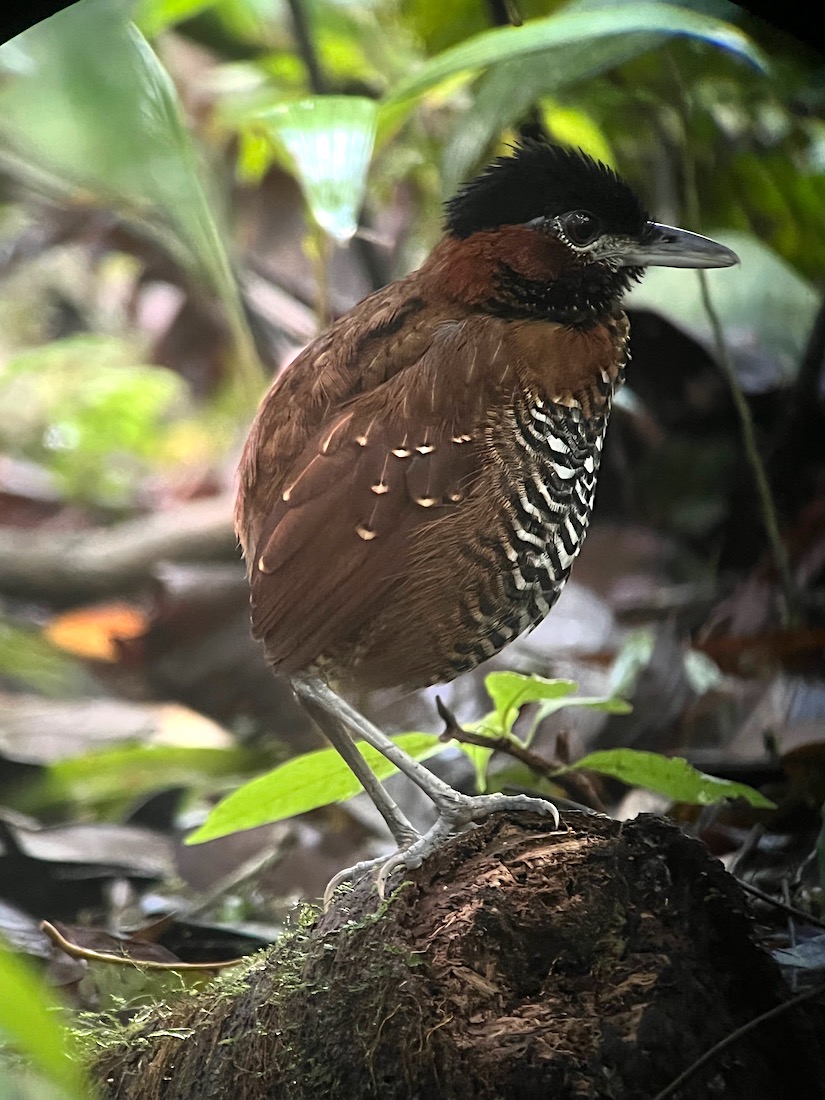
Black-crowned Antpitta
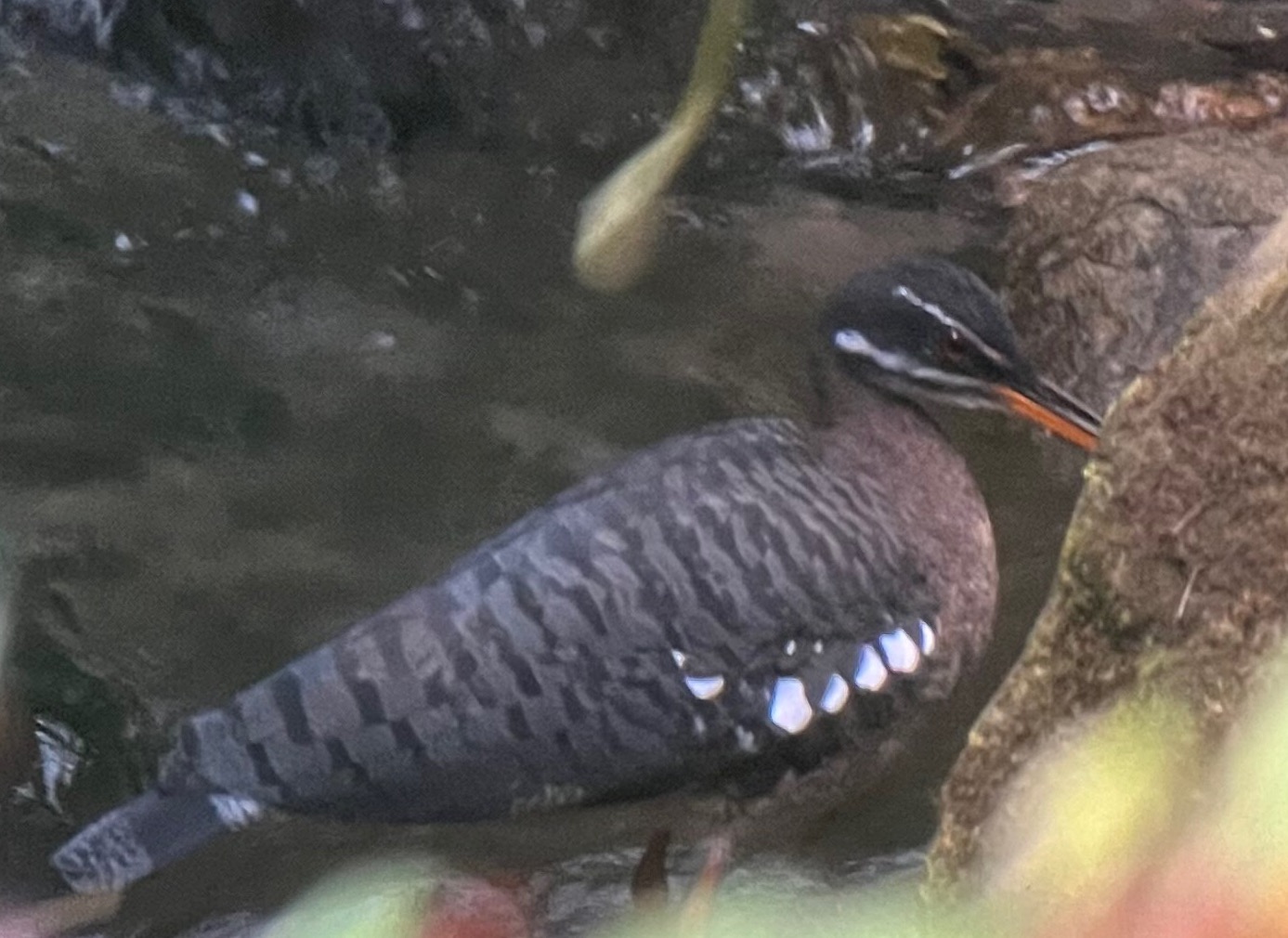
Sunbittern
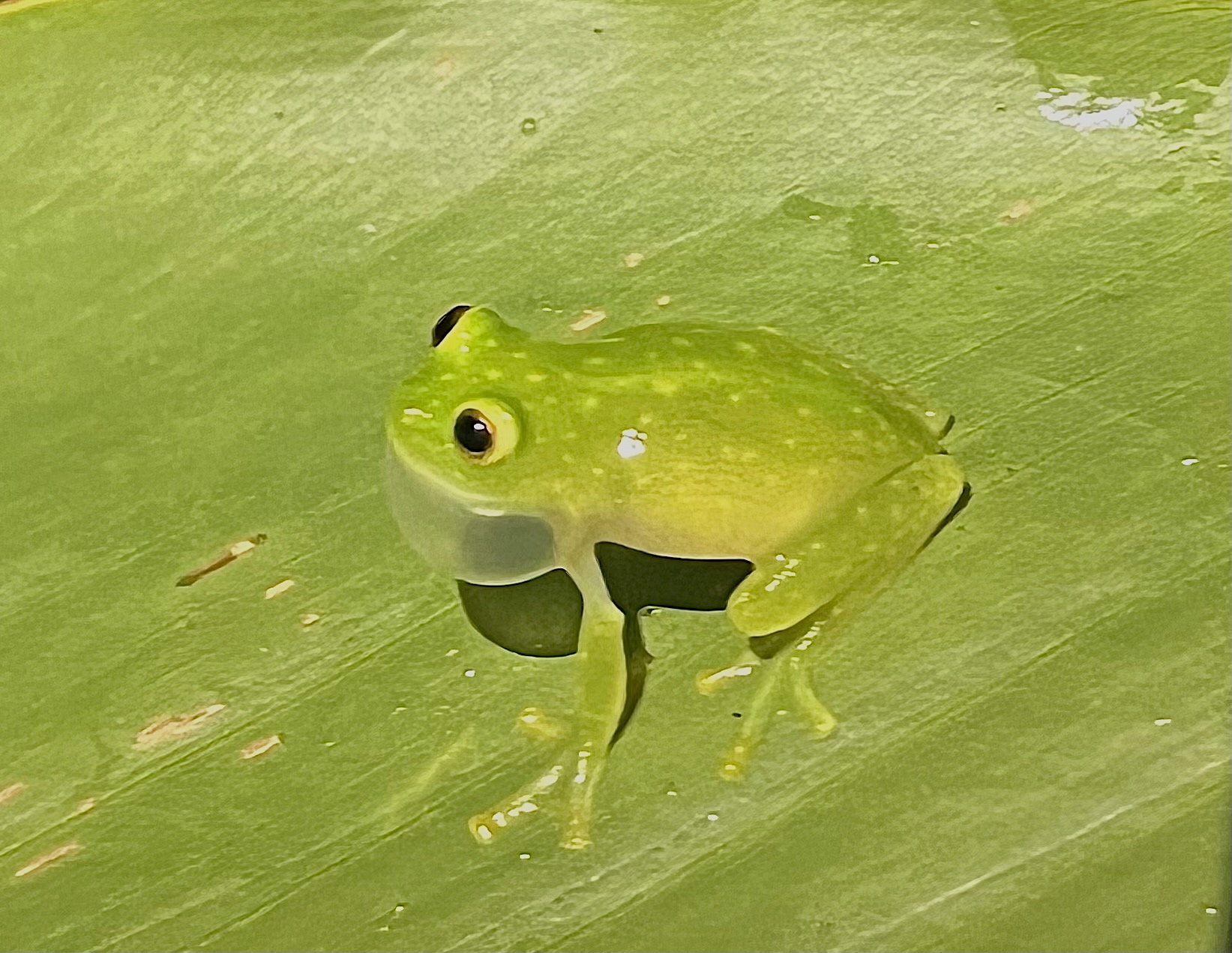
Tatayo’s Glass Frog
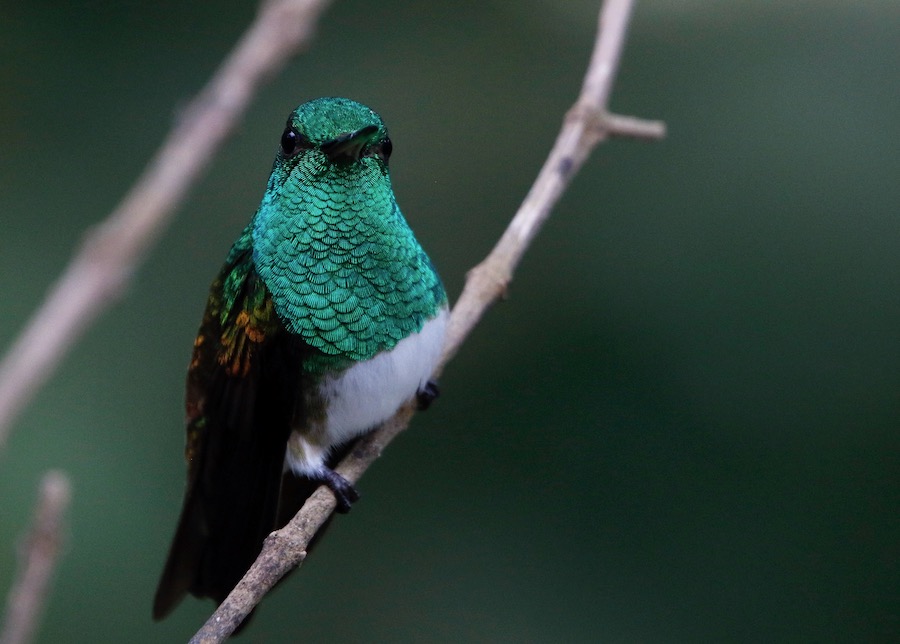
Snowy-bellied Hummingbird
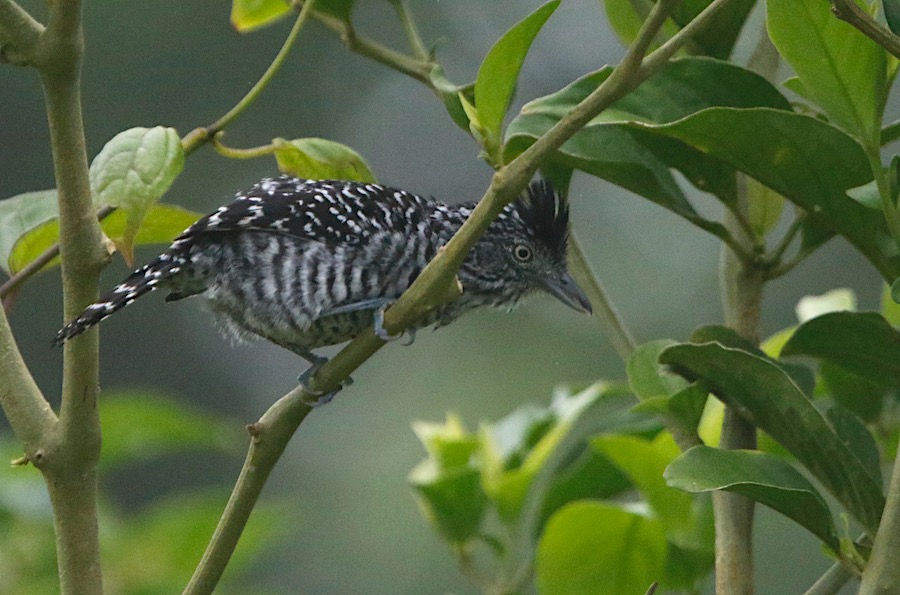
Barred Antshrike
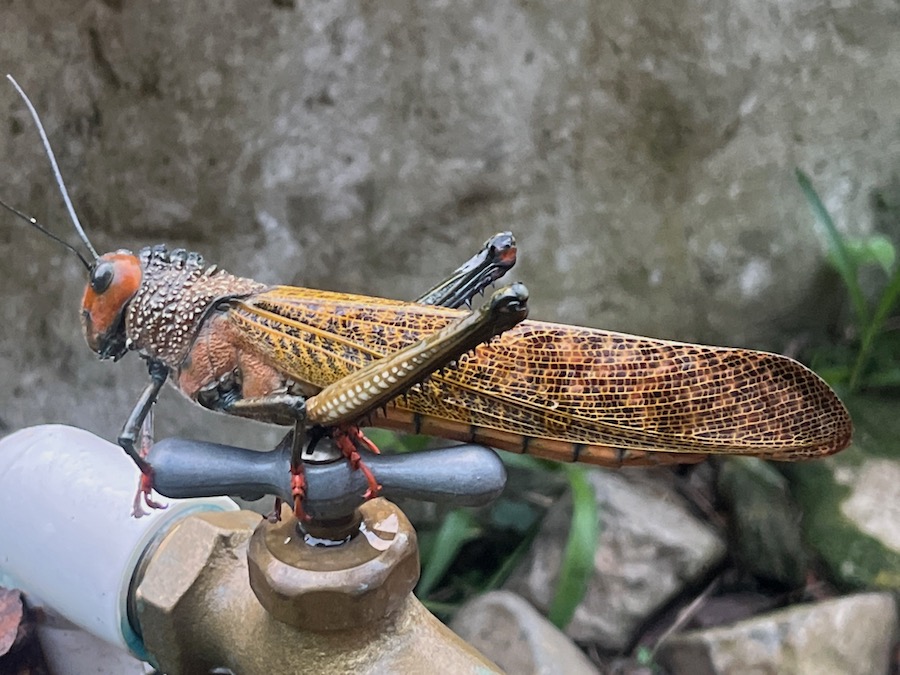
Giant Red-winged Grasshopper
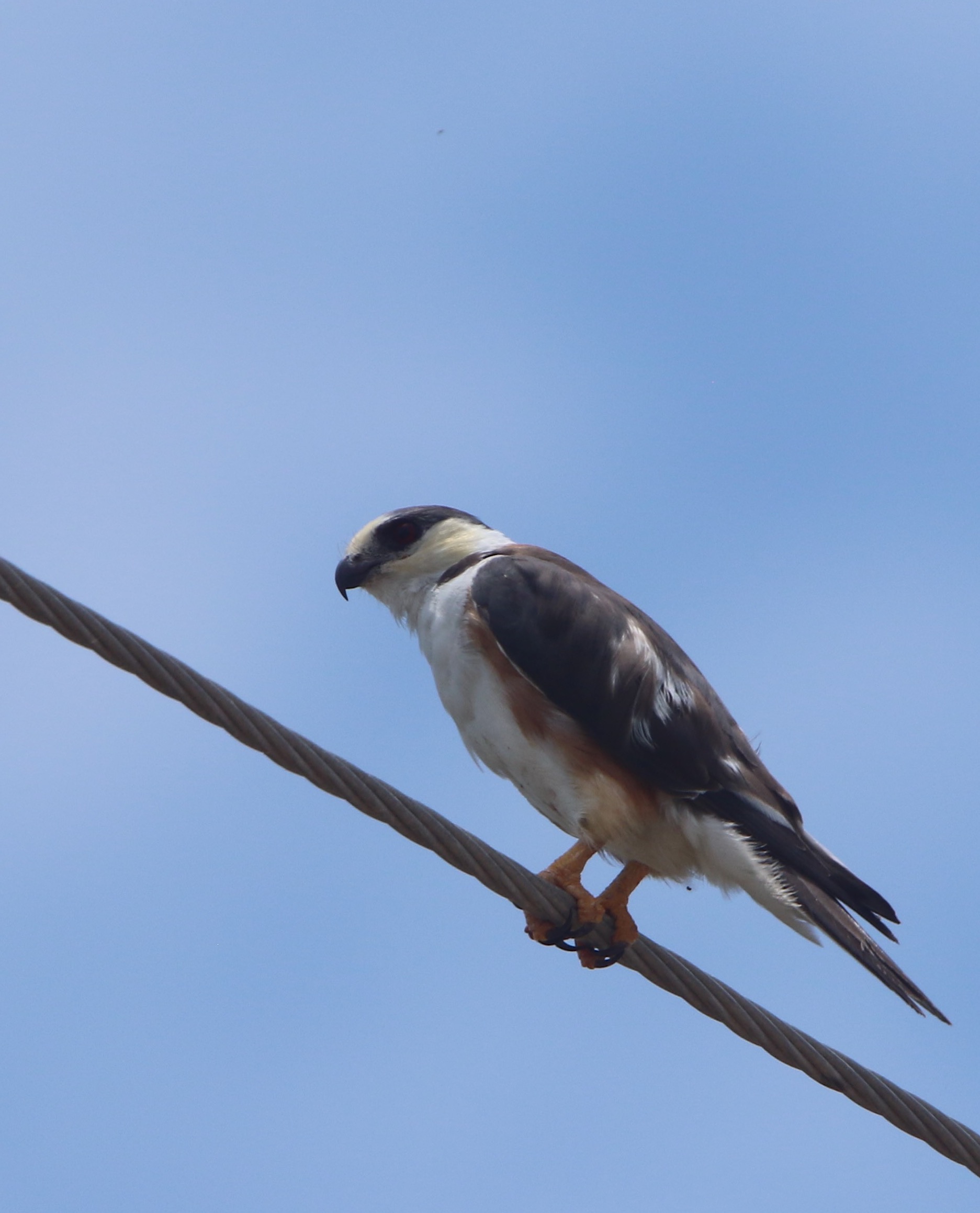
Pearl Kite
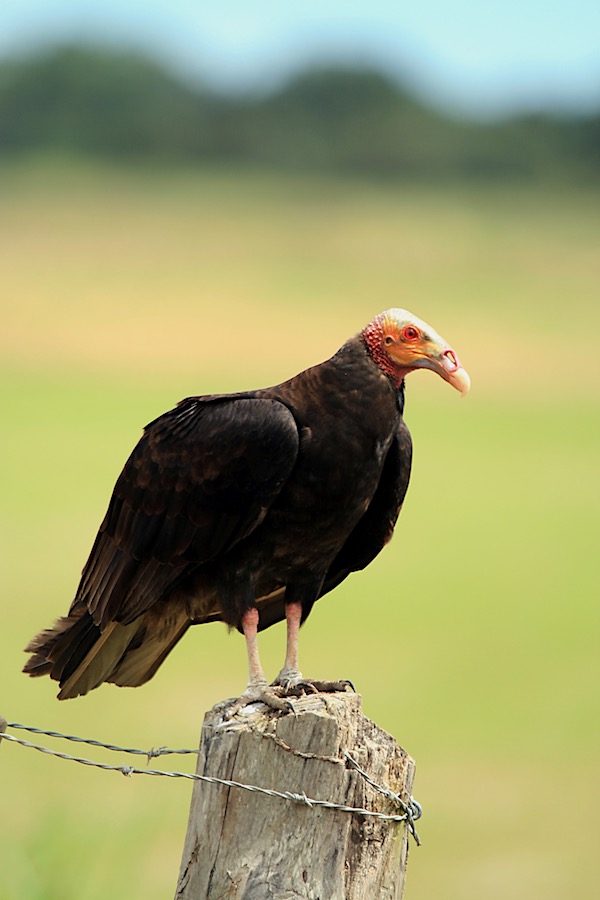
Lesser Yellow-headed Vulture
April 7:
Ethan Kistler reports from Morocco
After a several year hiatus due to the pandemic, Morocco re-opened just in time for Ethan Kistler’s Morocco in Spring tour. Starting in the Atlas Mountains, where recent snowfall still blanketed the ground, the group had great success with the likes of African Crimson-winged Finch, Levaillant’s Woodpecker, Tristram’s Warbler, and Maghreb Owl. The Sahara Desert didn’t disappoint either with excellent sightings of Egyptian Nightjar, Desert Sparrow, African Desert Warbler, a good number of larks, and photographic opportunities of sandgrouse. The coast around Agadir produced brilliant views of the endangered Northern Bald Ibis, which topped the group’s list of favorite trip species, while the Oued Souss and Oued Massa estuaries provided great numbers of coastal and wetland species.
African Crimson-winged Finch
Atlas Mountains
Desert Wheatear
Female Desert Sparrow at a nest
Well-camouflaged Egyptian Nightjar
A few Northern Bald Ibis of a larger group
March 17:
Jon Feensta recently led a fantastic trip to the Mindo area of Ecuador
We just finished our week long trip to one of South America’s great birding spots: the Mindo area of northwest Ecuador. With the benefit of a week in one lodge, we took day trips to areas of elevation high and low in search of the area’s famous avian diversity. And, diverse it was!
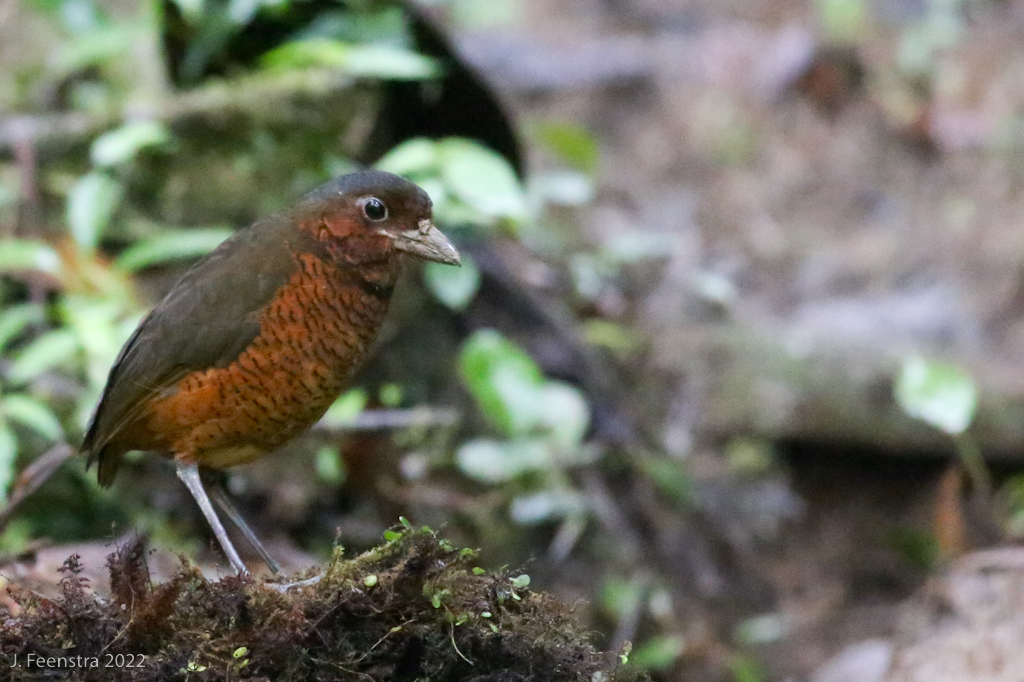 Some of our highlights were some of the big things, like this Giant Antpitta, one of four antpitta species we saw that day.
Some of our highlights were some of the big things, like this Giant Antpitta, one of four antpitta species we saw that day.
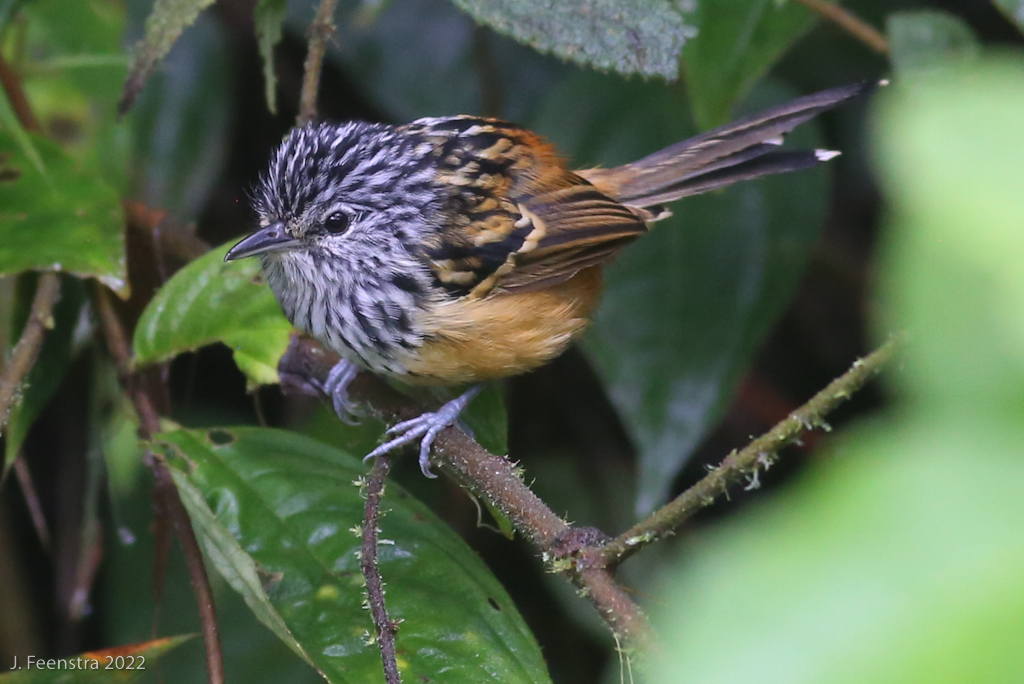
…and some were kind of small things, like this Streak-headed Antbird, a denizen of high elevation bamboo thickets.
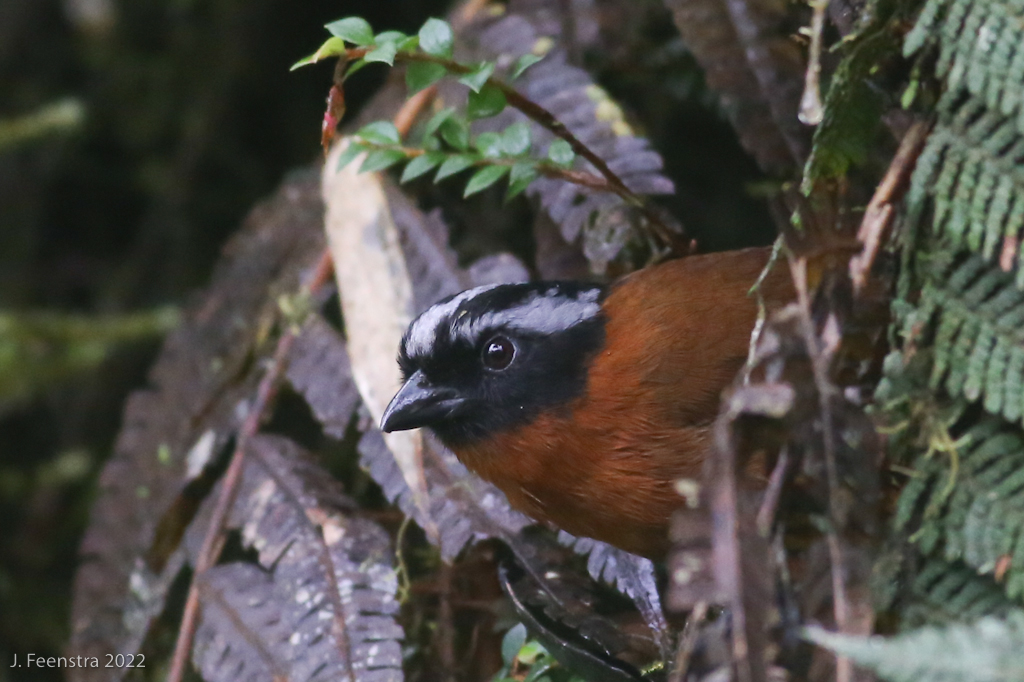
…and some were things with very tiny ranges, like Tanager Finch, which is only found in a little sliver of “Chocó” forest in northwestern Ecuador and southwestern Colombia.
We also had some close encounters with a few of our birds. Here a Velvet-purple Coronet is perched on Dave’s notebook as he writes “Velvet-purple Coronet” in it.
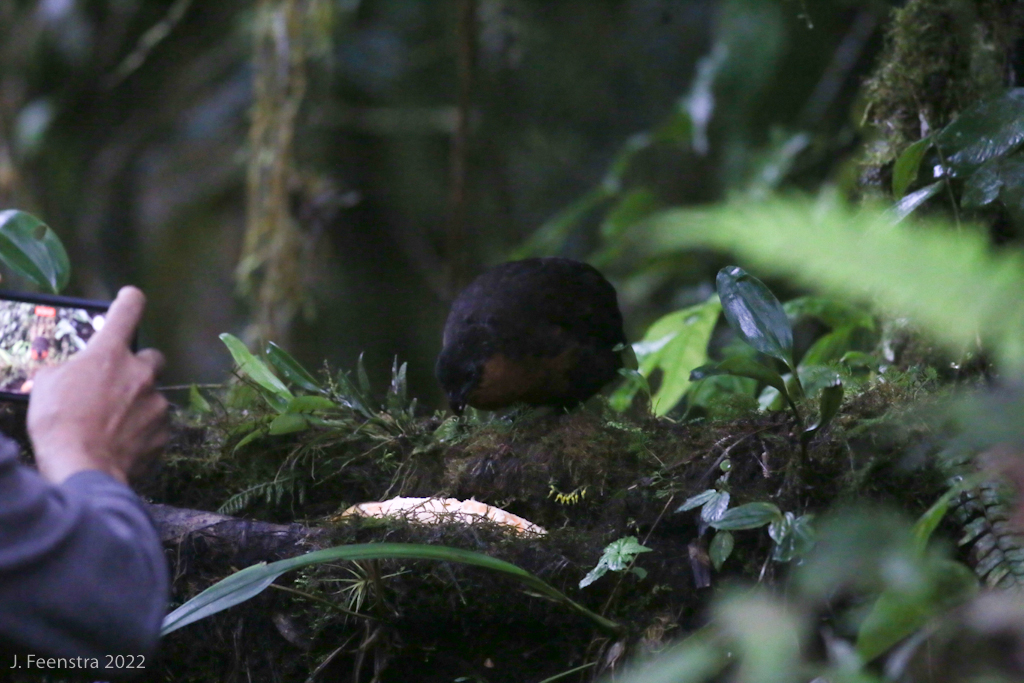
…or, note the cell phone photo being taken of this Dark-backed Wood-Quail.
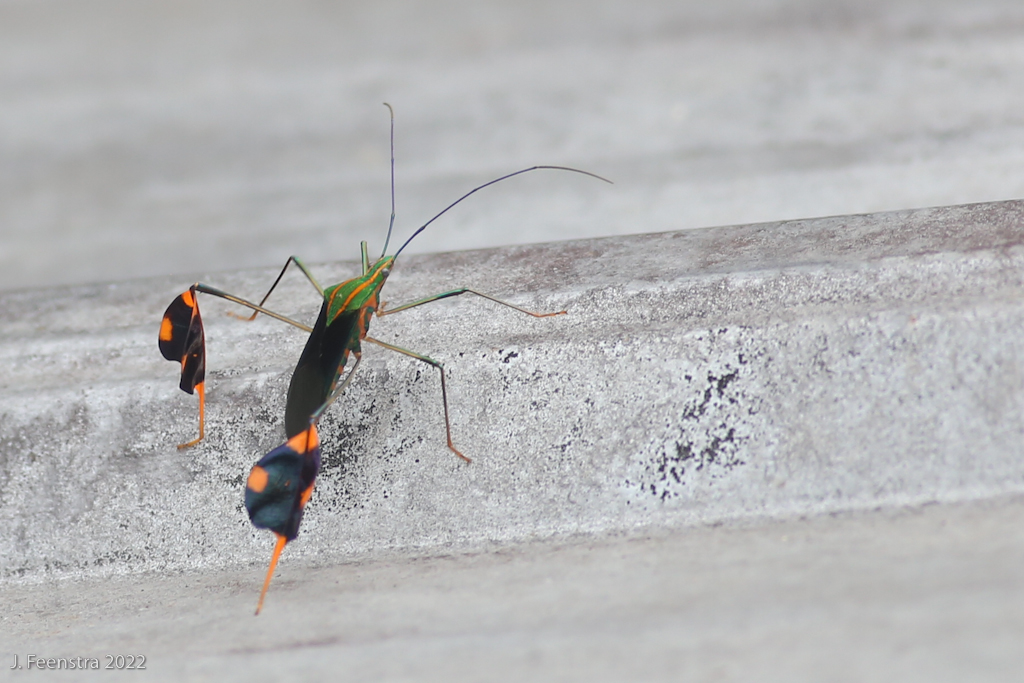
It’s not only about birds, though, check out this Diactor bilineatus.
Under the great gaze of the giant Andean Cock-of-the-rock statue, we proclaim the trip successful.
March 16:
Gavin Bieber has recently returned from a successful trip to northern Colombia
We started off in the Caribbean lowlands of far North Colombia, where in the arid scrub at the base of the Guajira Peninsula we found this handsome White-fringed Antwren to be quite cooperative. 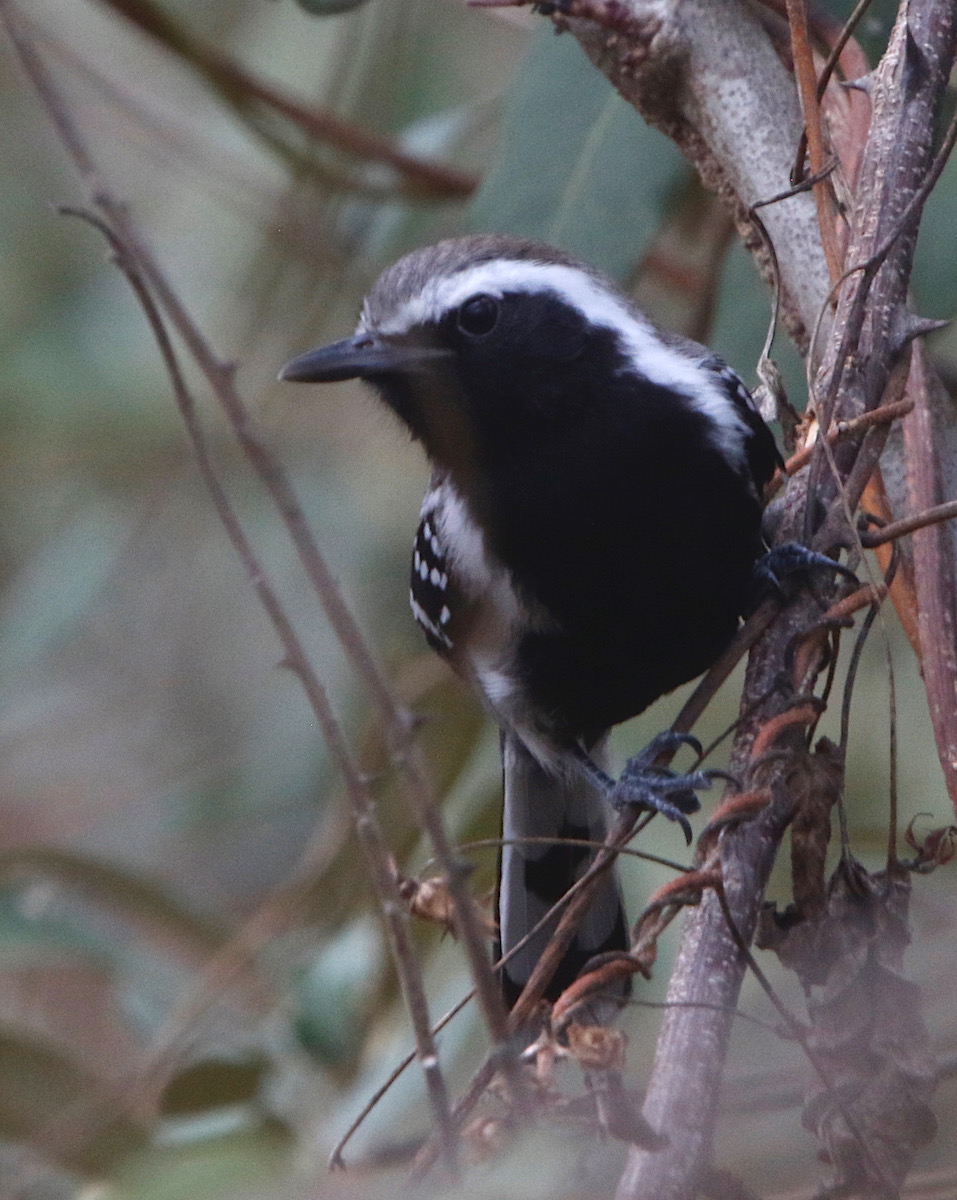 Some feeders put out nearby allowed us excellent views of the quite local Orinocan Saltator
Some feeders put out nearby allowed us excellent views of the quite local Orinocan Saltator
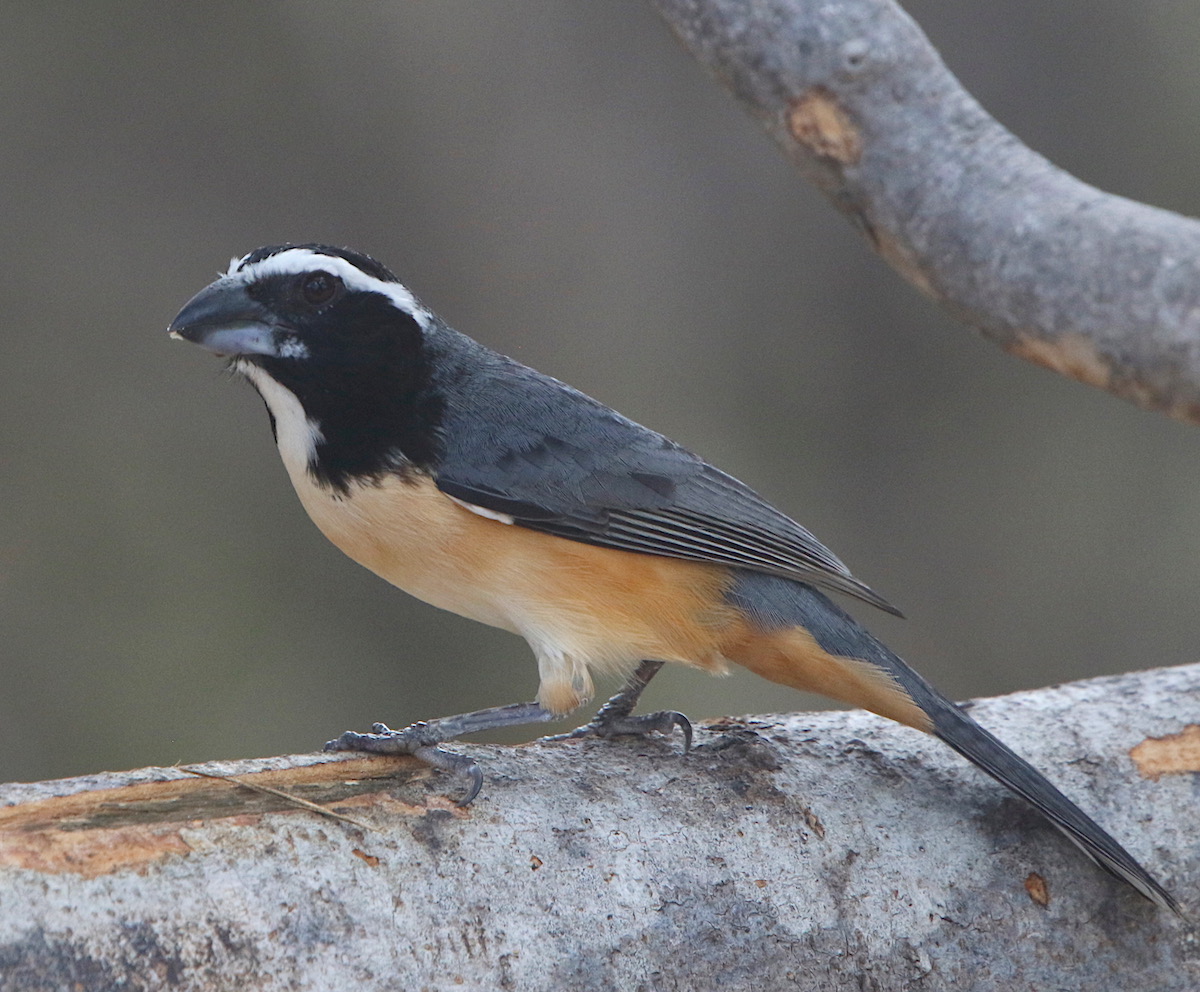
as well as a greedy Green Iguana that really seemed to like Papaya.
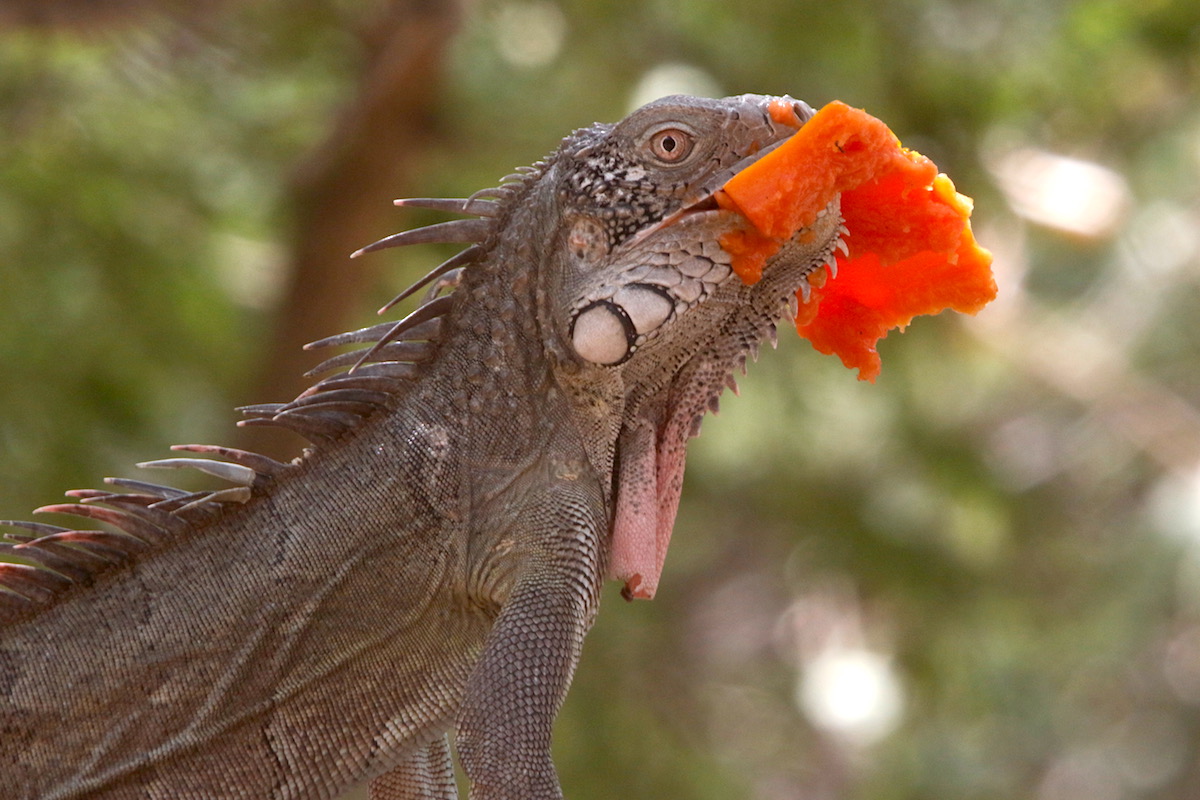
Around our tranquil lodge at Finca la Jorara
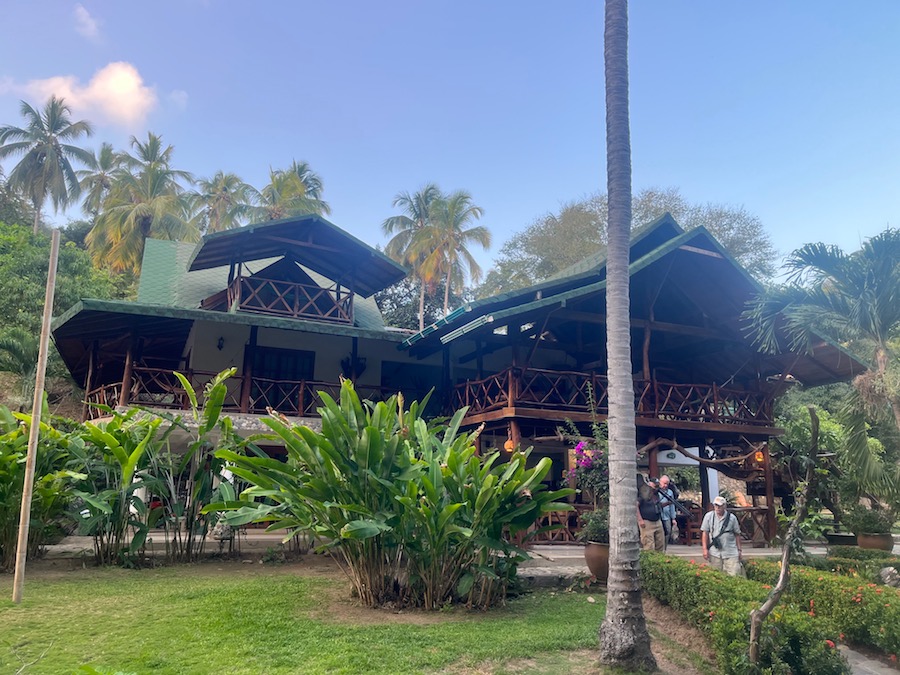
we were surrounded by forest, and among many birds we were happy to find this quietly perched Russet-throated Puffbird
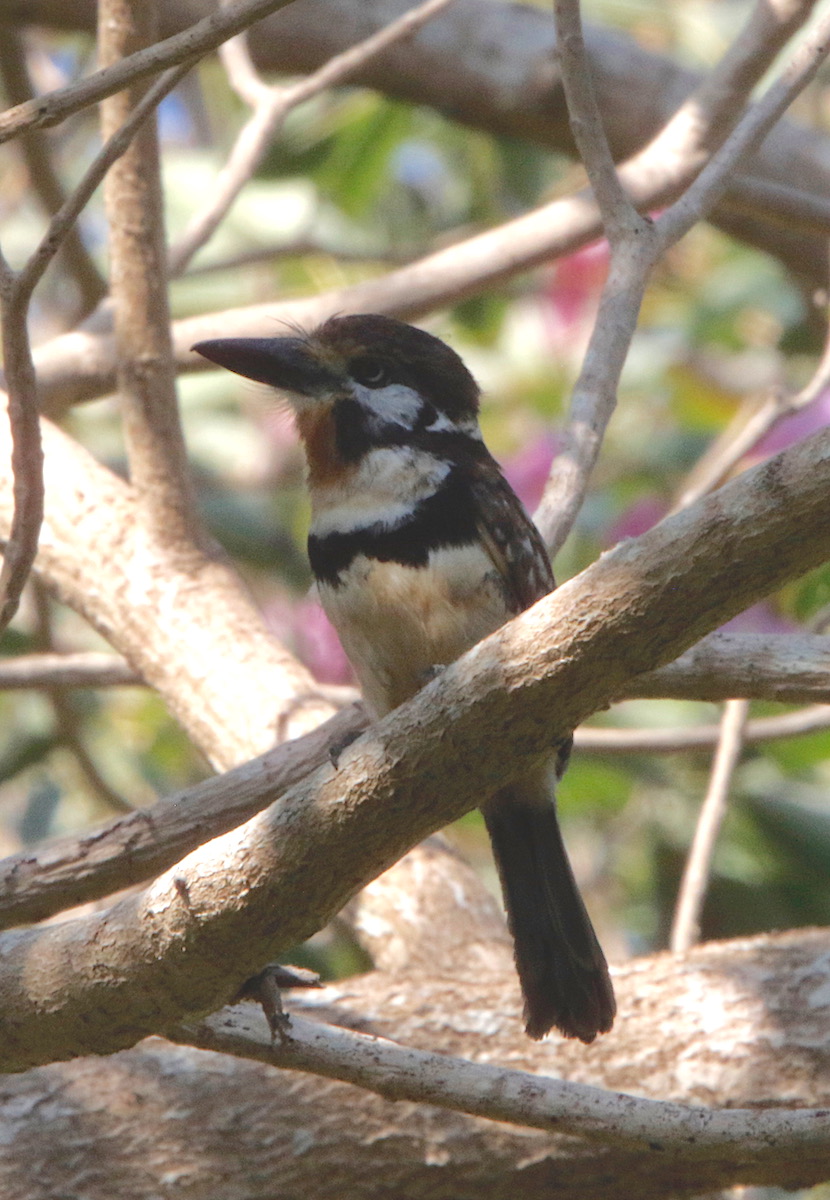
and busy Red-tailed Squirrels. In the foothills of the Santa Marta Mountains we stayed at a small ecolodge with excellent feeders. Here we found our first Steely-vented Hummingbirds
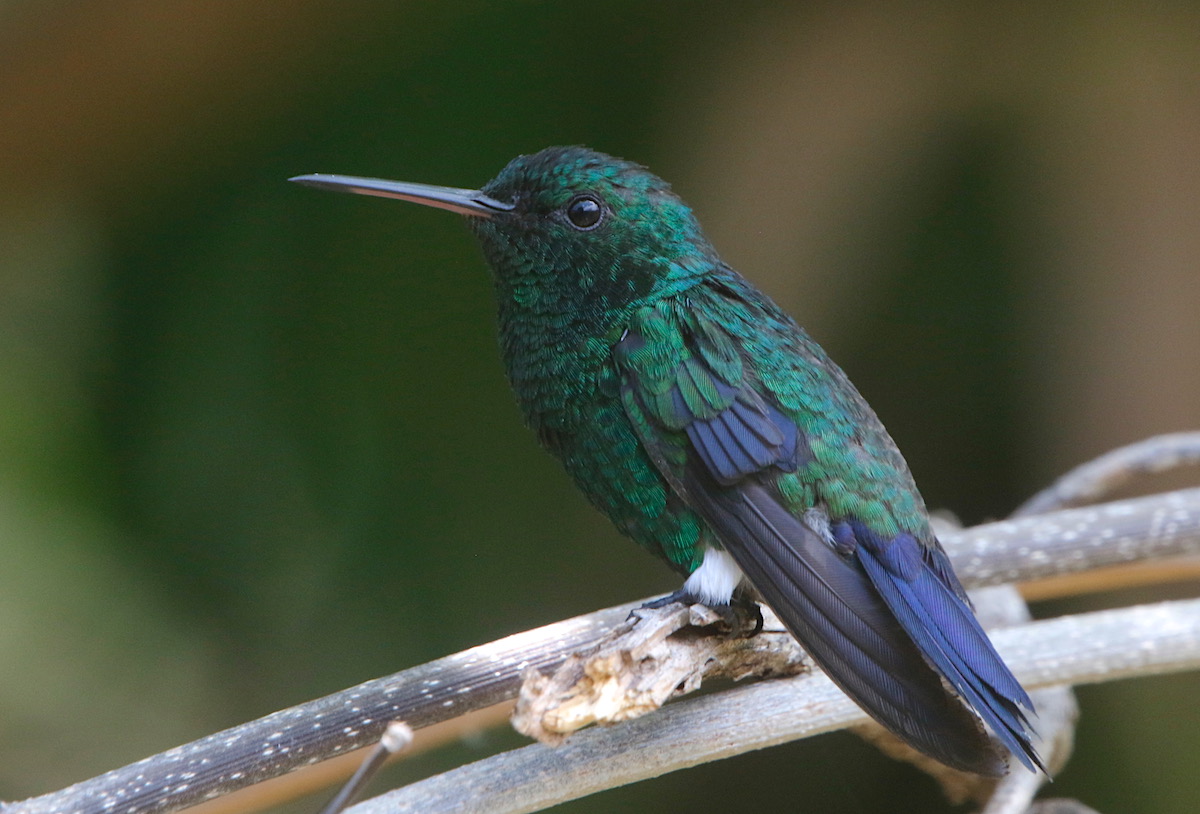
and White-necked Jacobin
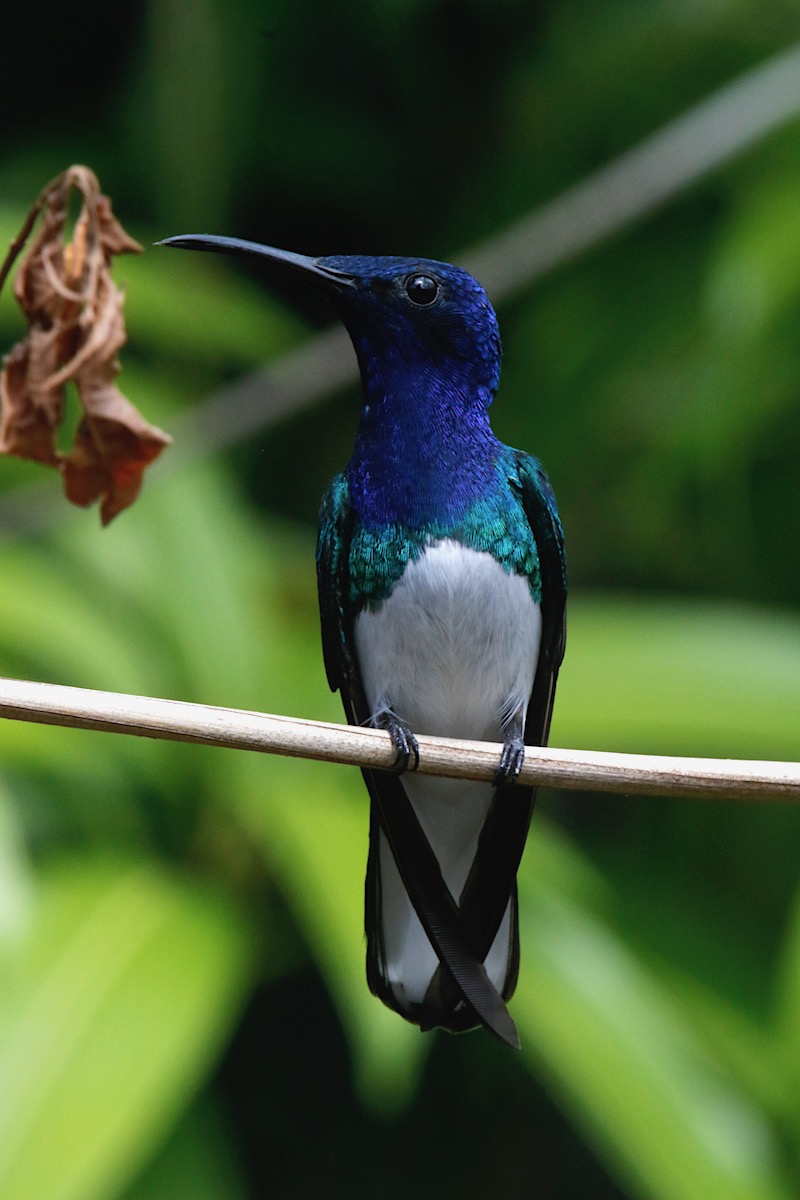
as well as the flashy Yellow-tailed Oriole,
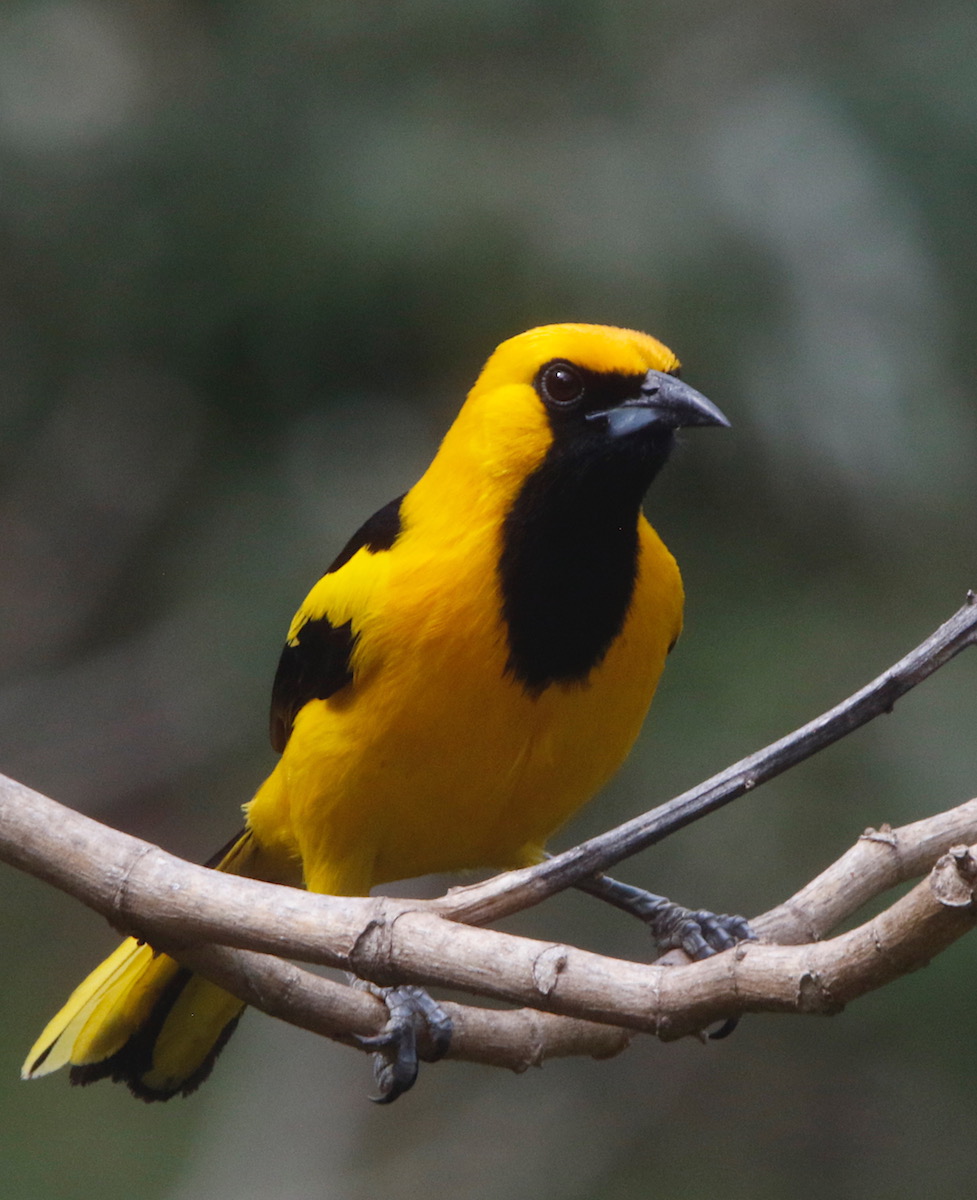 several almost unbelievably colourful Blue-naped Chlorophonia
several almost unbelievably colourful Blue-naped Chlorophonia
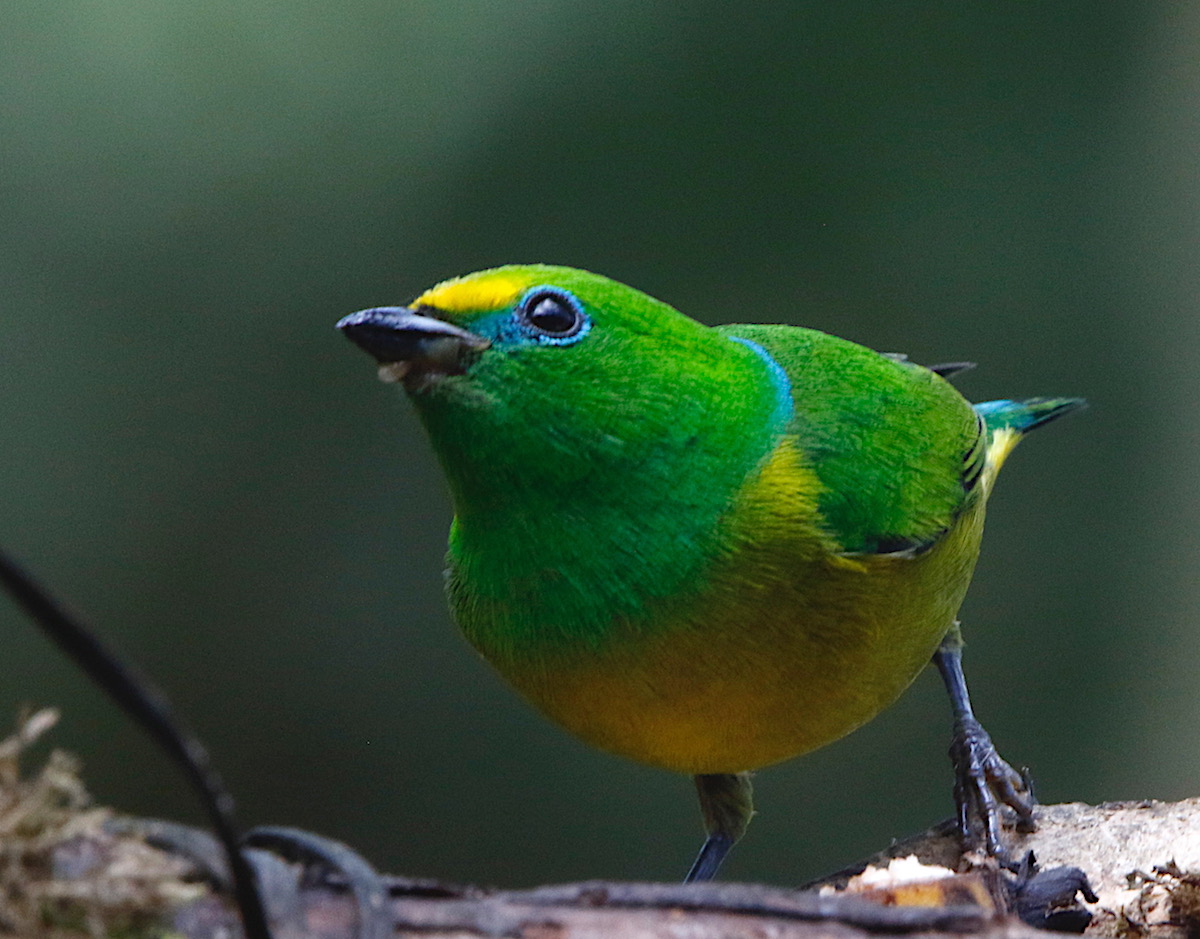
and some bright and tropical looking butterflies like this Clysonymus Longwing.
![]()
The second half of the trip covered the upper stretches of the San Lorenzo Ride, a series of peaks that lie just off the central ranges of the Santa Marta, topping off at a little over 9000 feet. Our lodge for this section of the trip is the ProAves owned and operated El Dorado, a wonderful location with a newly constructed ridgetop restaurant
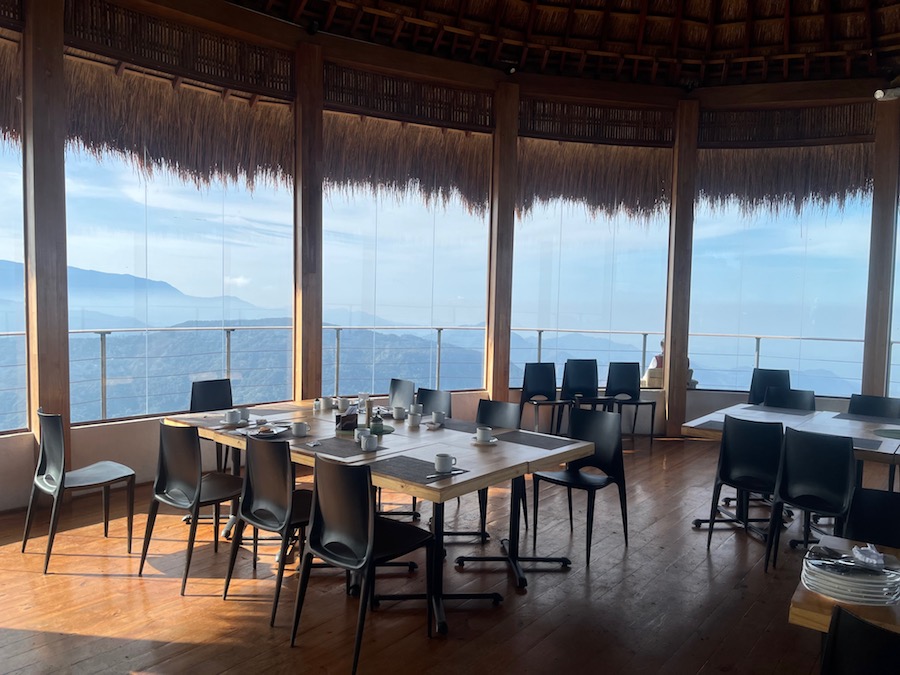
that offers amazing views of the mountains.

The lodge feeders were always busy, with tanagers such as Black-capped Tanager, and an array of hummingbirds, such as the very common but stunning Crowned Woodnymph,
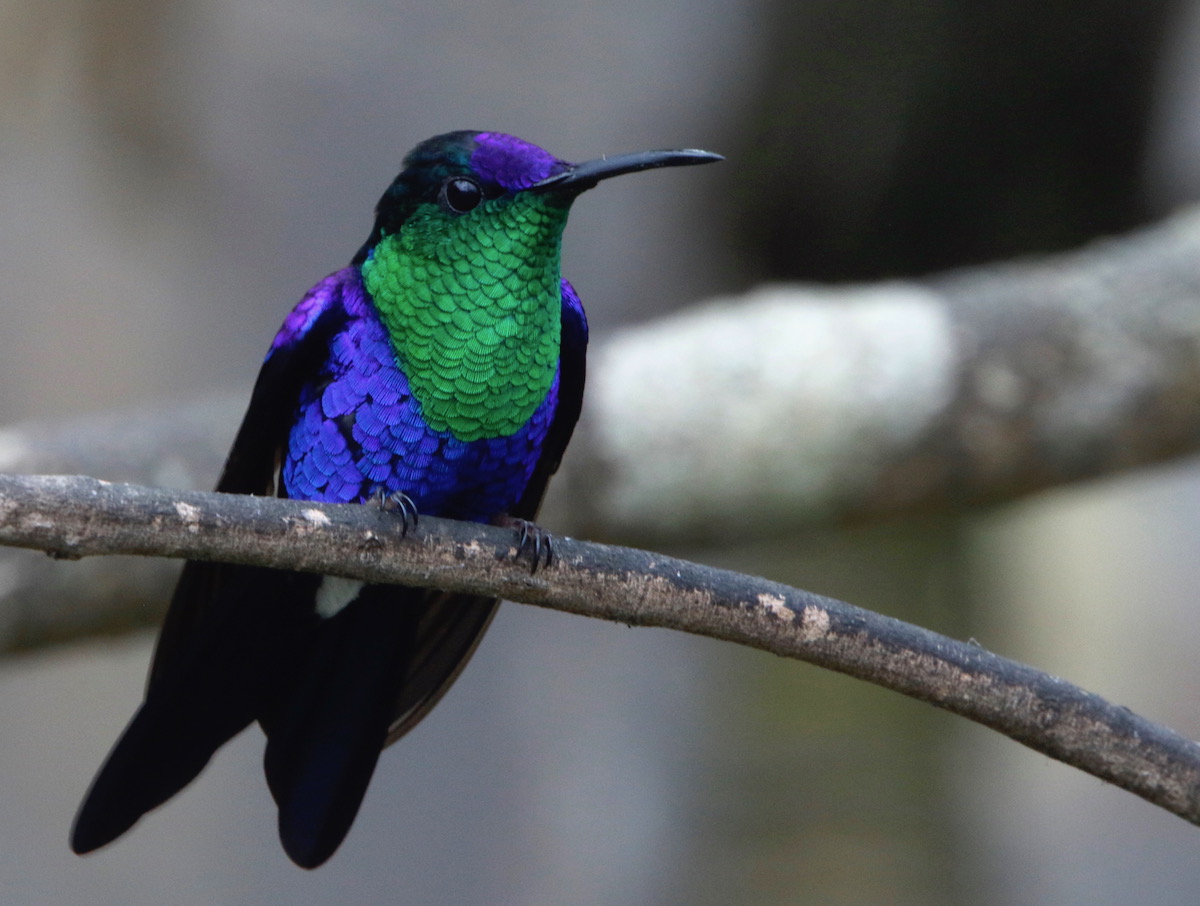
and the endemic and spectacular White-tailed Starfrontlet.
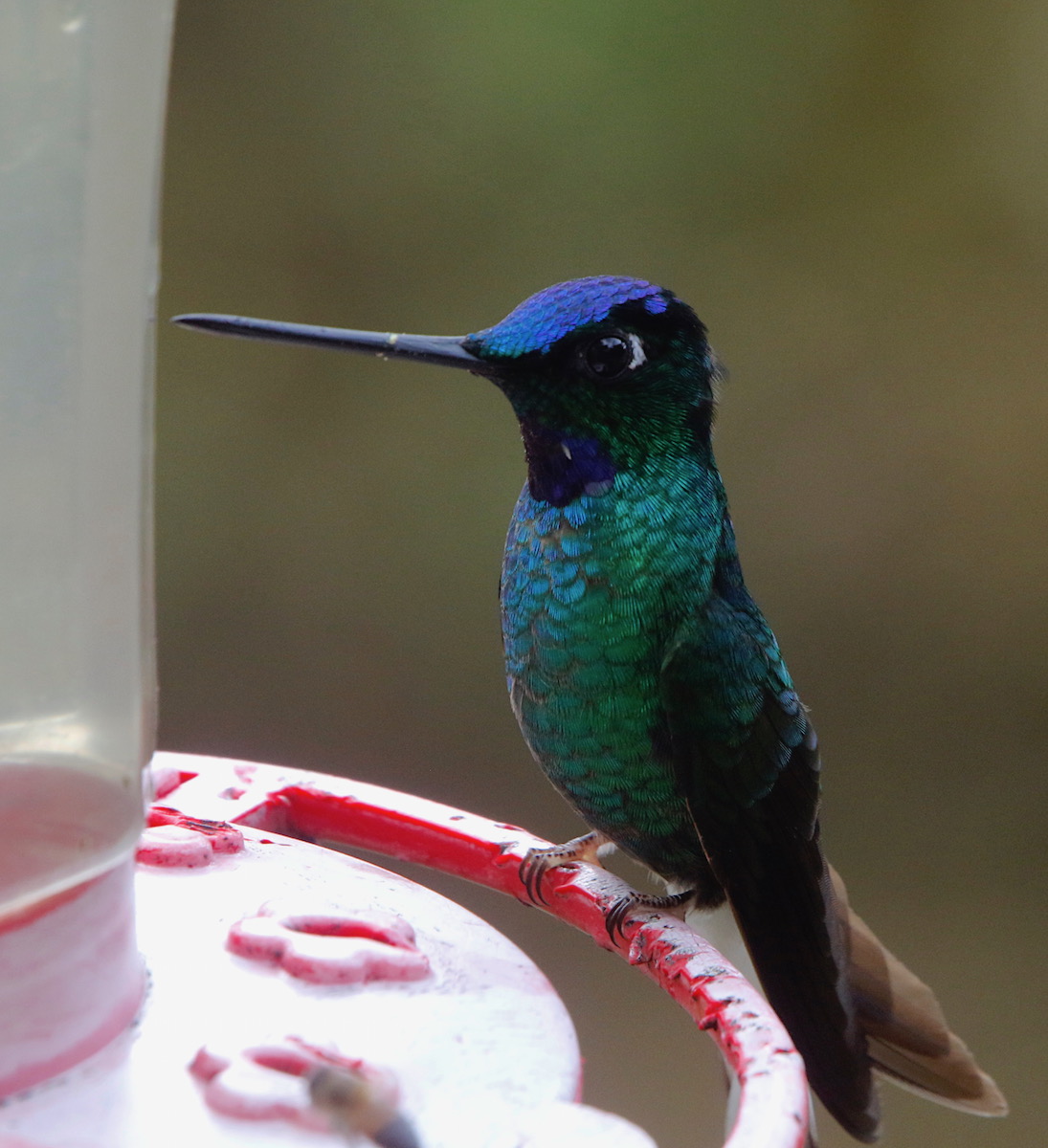
Near the lodge we enjoyed multiple views of the near endemic White-tipped Quetzal
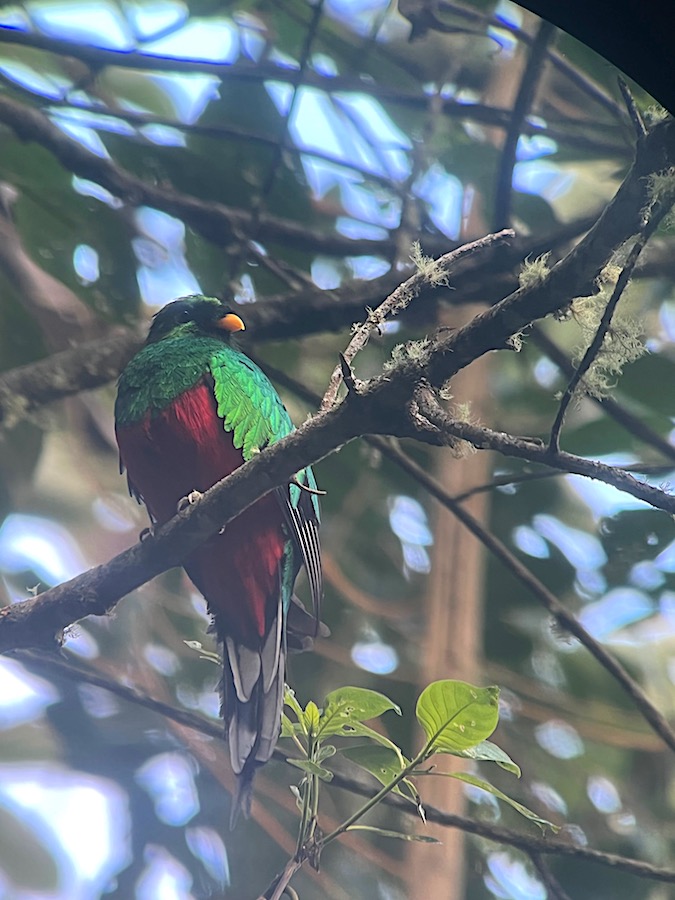
at a staked-out nest site, quite tame Sickle-winged Guans
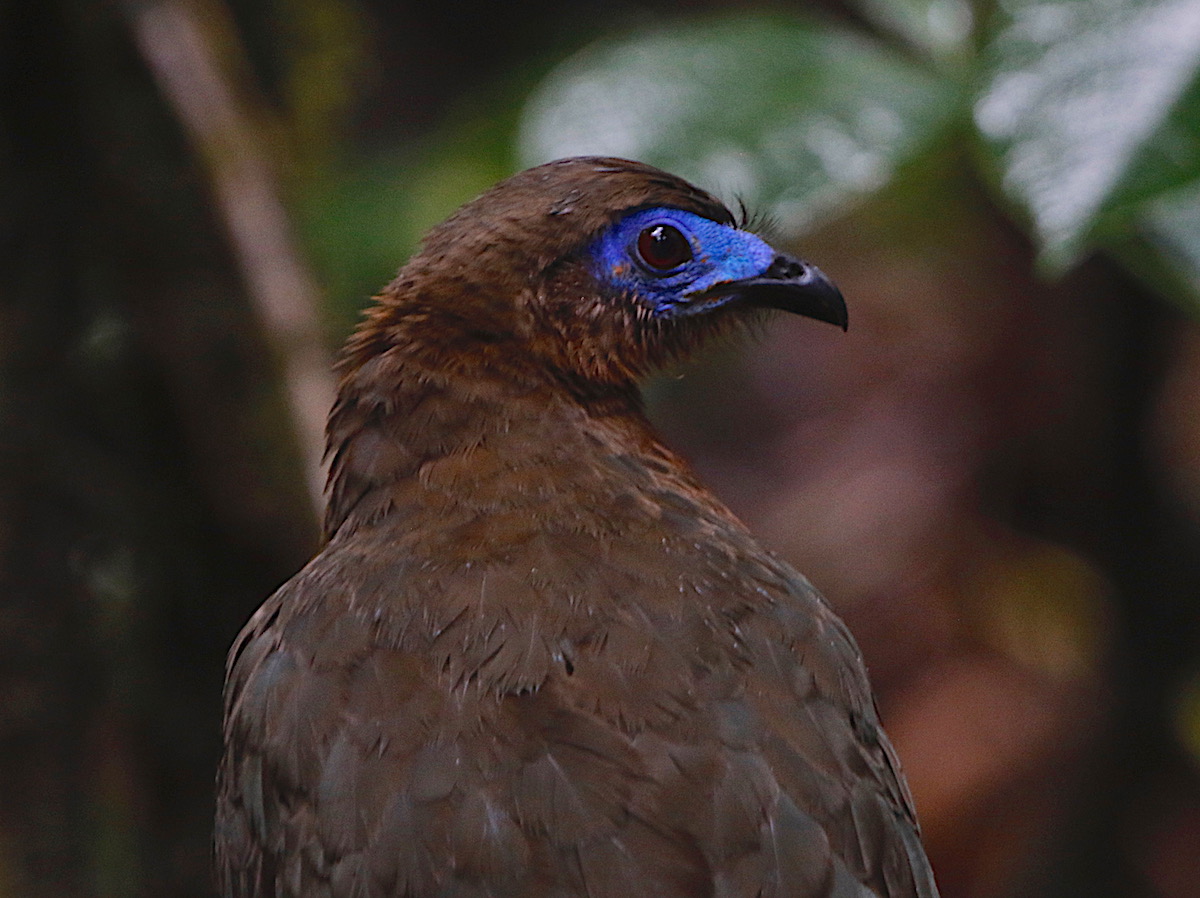
and daily encounters with a family group of Masked Trogons.
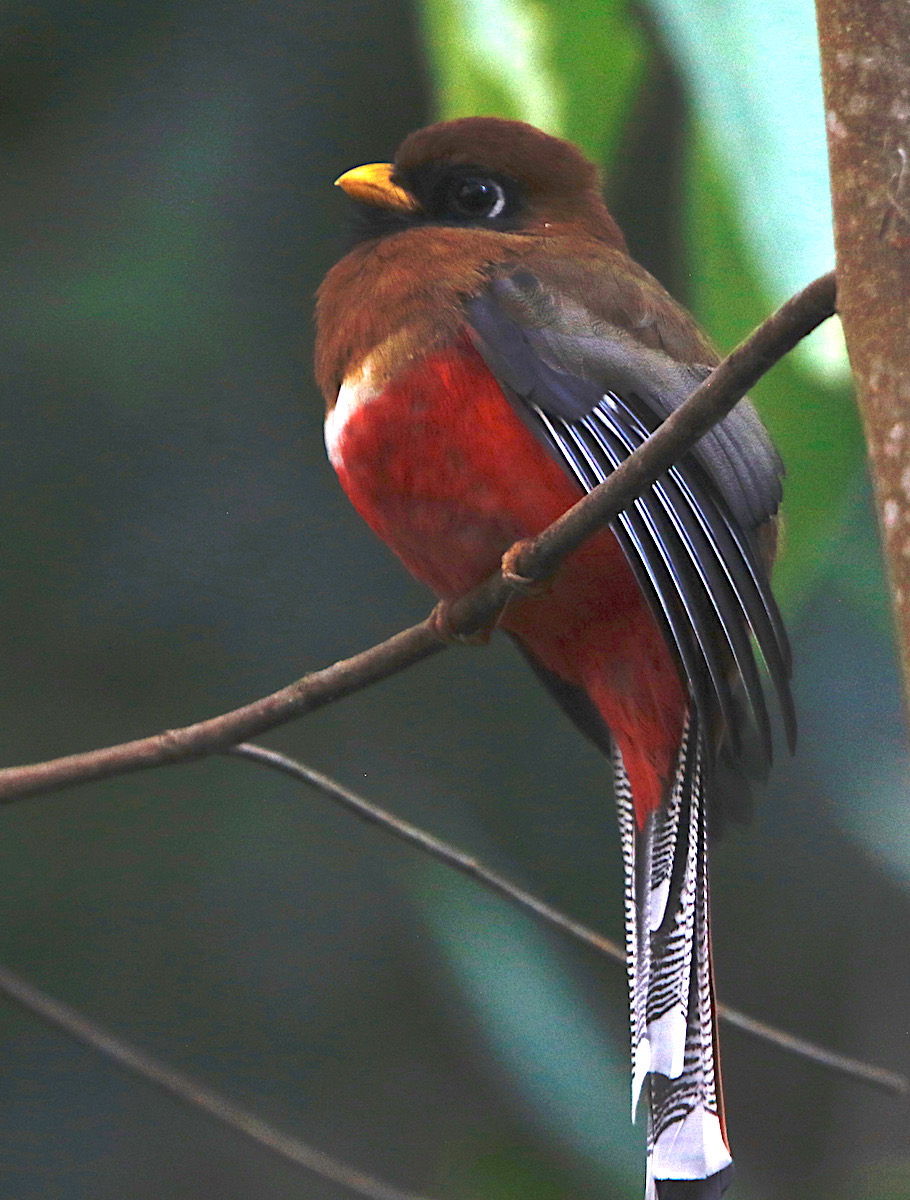
Along the ridgetop we found virtually all of the accessible Santa Marta endemics including the furtive but colourful Santa Marta Warbler.
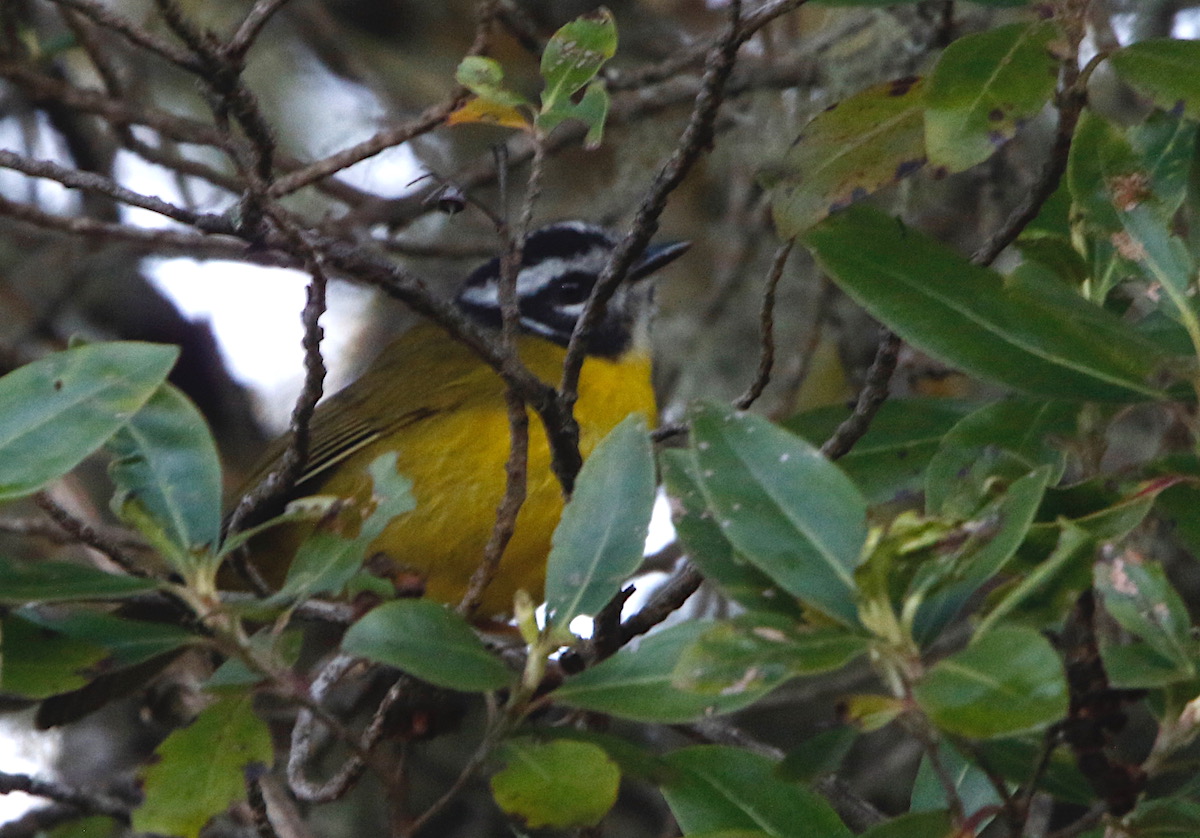 As always in the tropics there is life abounding at all strata in the forest, and in the understory we often came across interesting creatures as well, from this amazing wasp mimic Moth in the genus Isanthrene,
As always in the tropics there is life abounding at all strata in the forest, and in the understory we often came across interesting creatures as well, from this amazing wasp mimic Moth in the genus Isanthrene,
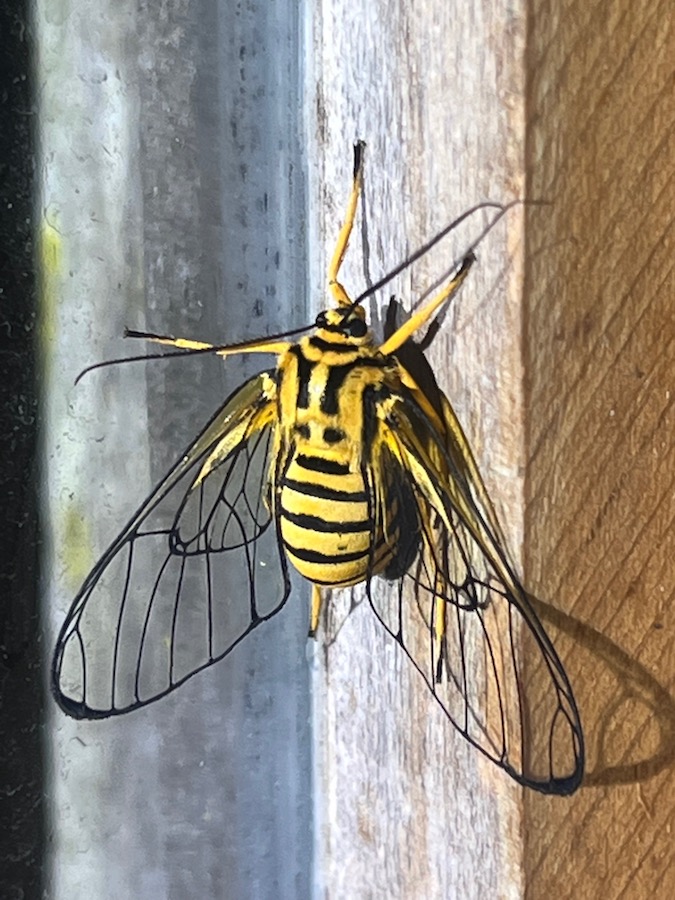 this Leopard Moth,
this Leopard Moth,
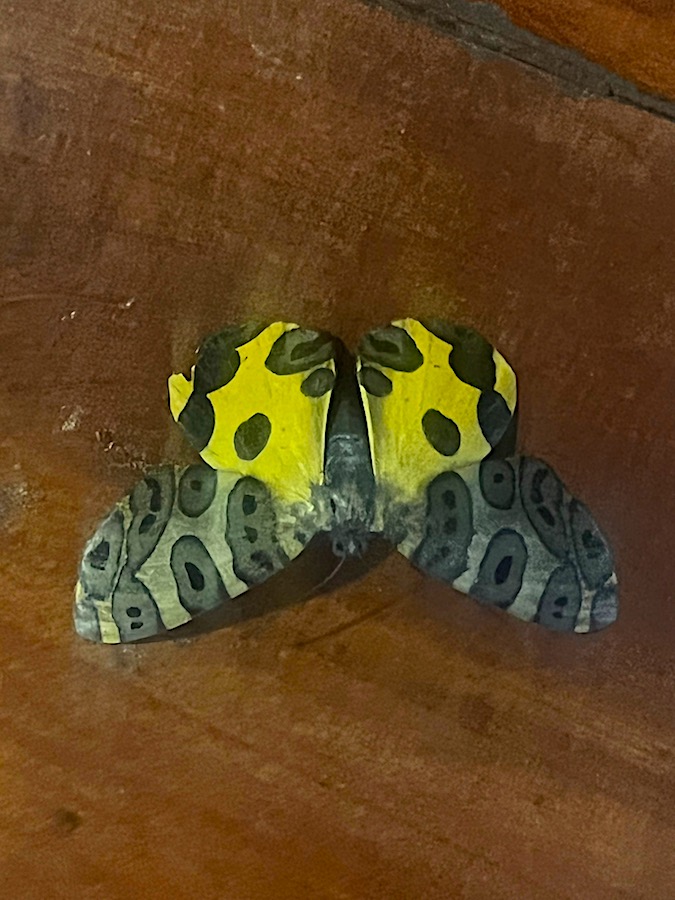
an array of endemic frogs such as this Ground Robber Frog
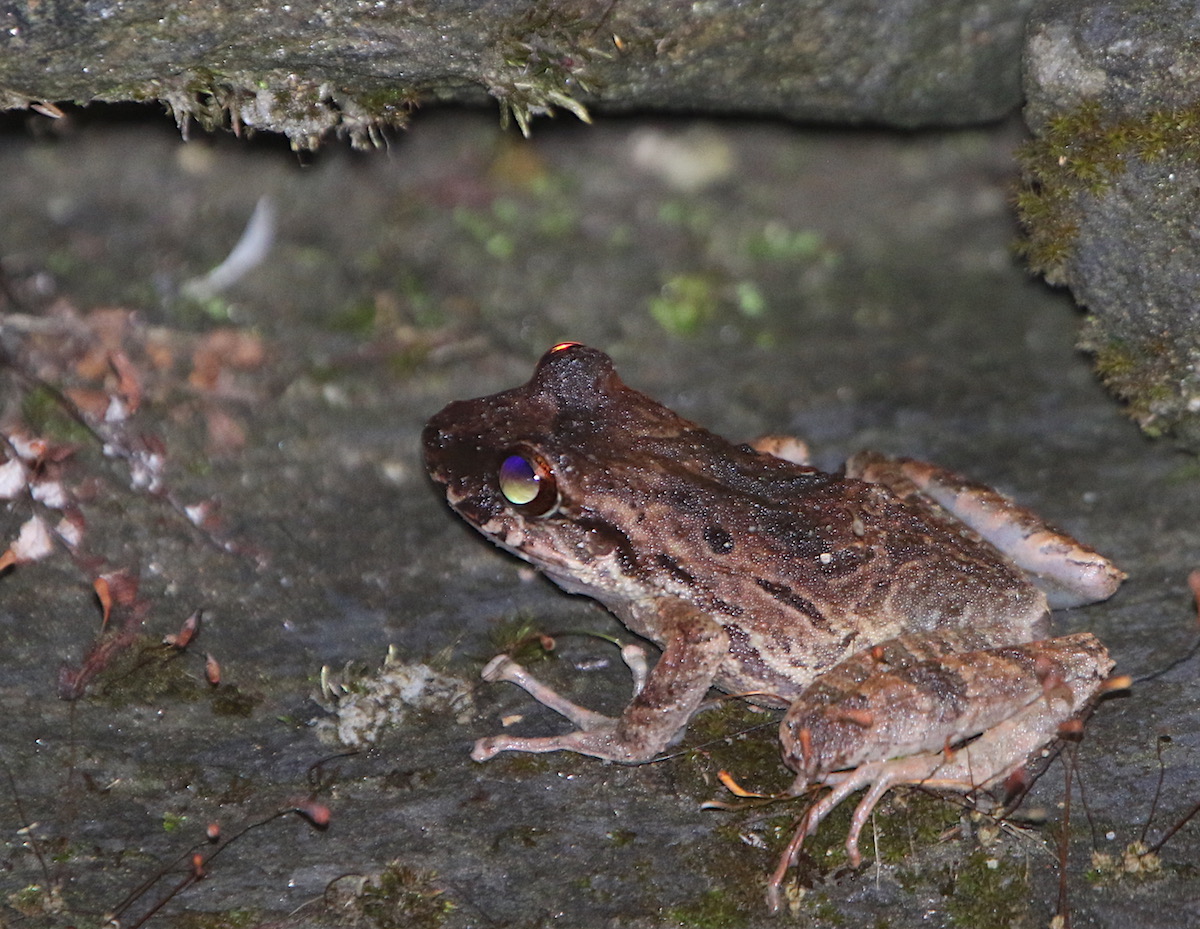 and the rarely encountered Savage’s Mushroomtongued Salamander.
and the rarely encountered Savage’s Mushroomtongued Salamander.
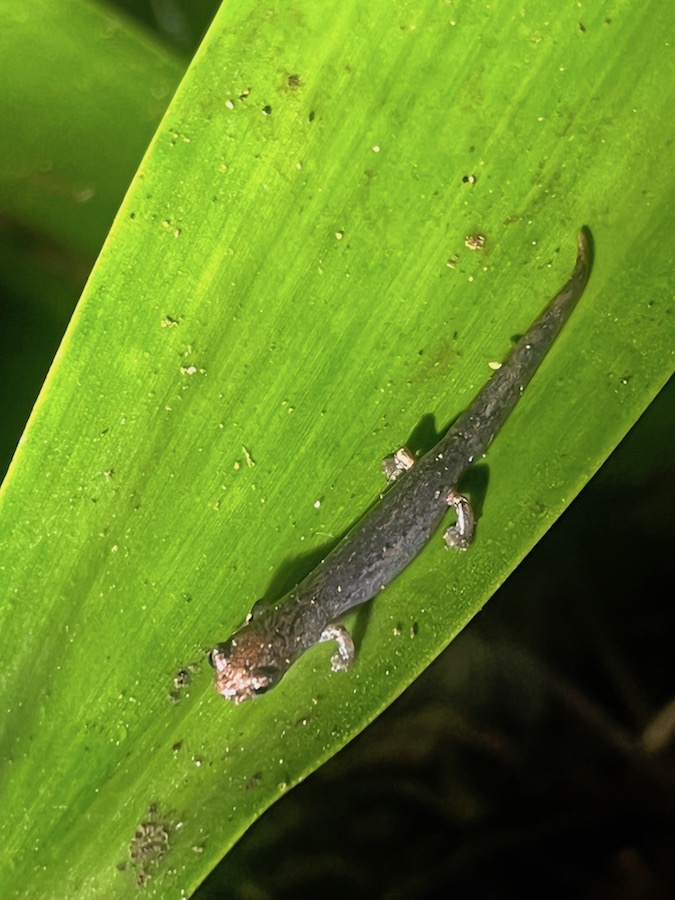
In all we tallied over three hundred species of birds in a very enjoyable week of birding, accompanied by some very comfortable lodges, excellent food and a really fun group of participants.
March 14:
Rich Hoyer updates us on his recent Costa Rica tour
We had a wonderful tour to Costa Rica this spring. Every day brought us so many wonderful sightings of beautiful birds, stunning botanical delights, and fascinating other forms of life.
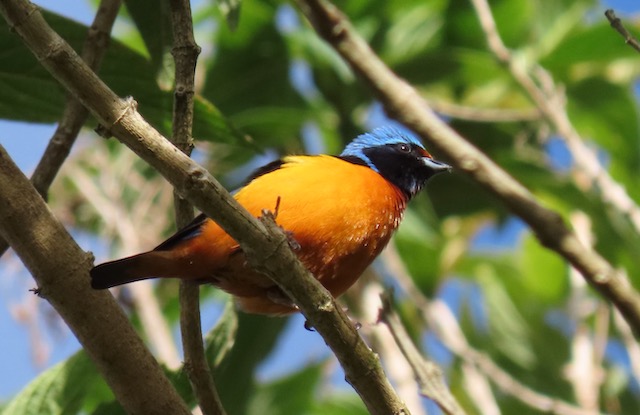
On our first morning’s stop just outside Tapantí National Park the barrage of new birds was overwhelming, but everyone was certain to claim this Elegant Euphonia as one of their favorite birds. But then we saw one amazing species after the next, such as soaring Barred Hawks, an Ornate Hawk-Eagle right over our heads, Prong-billed Barbets duetting, and on and on – and the euphonia was all but forgotten save for this lucky photo.
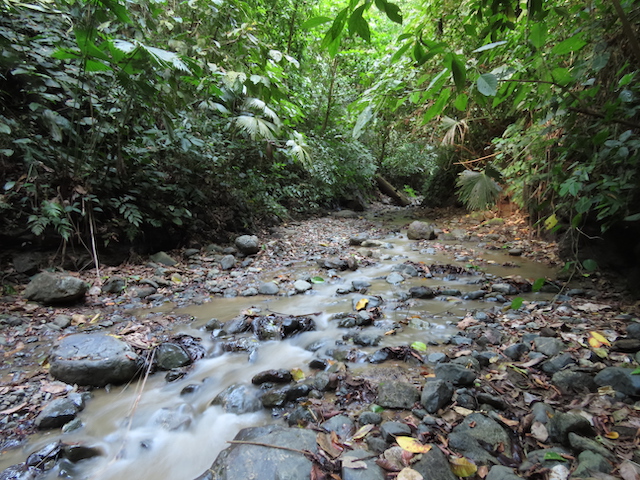
Our three days on the Osa Peninsula were full of wonderful experiences, one being our short afternoon hike up Quebrada Pizote, wading in the refreshingly cool water.
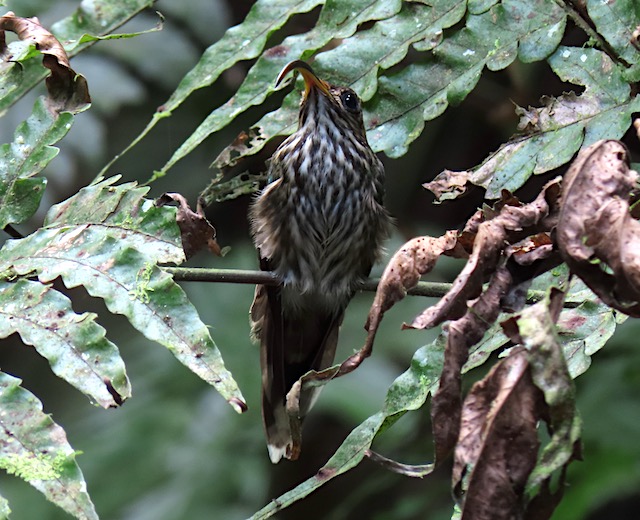
It was here we spotted two elusive White-tipped Sicklebills, one on its nest and another already on its evening roost by 3:00 in the afternoon.
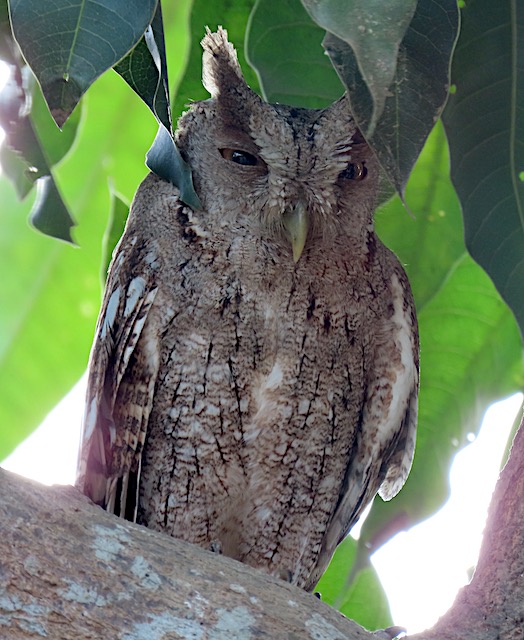
Farther up the west coast we had two different Pacific Screech-Owls on their day roosts in unbelievably open perches.
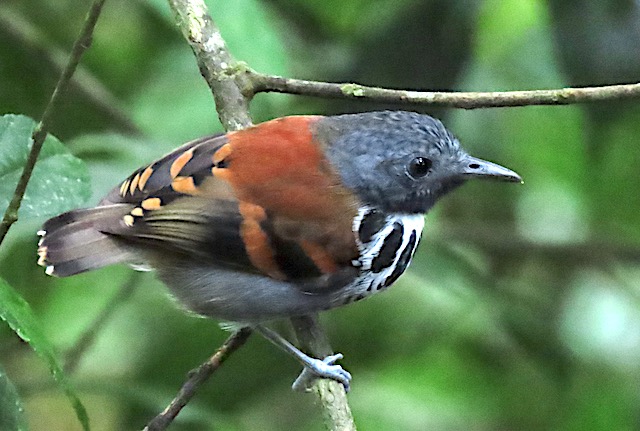
A birding group with friends from Indiana told us about an army ant swarm just down the road from our hotel at Arenal. It had moved farther down the road from the previous day but was still in the area. We were able to see several species in attendance, including five or six Bicolored Antbirds and as many as ten or more Ocellated Antbirds, a once-in-a-lifetime experience. The swarm had moved into the territory of a pair of these adorable Spotted Antbirds, which don’t often attend such swarms.
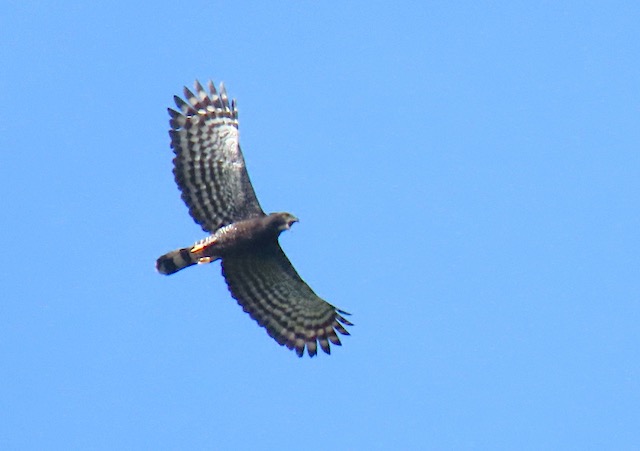
Our full morning at La Selva Biological Station was a rich experience with many highlights, thanks to the help of our excellent local guide Octavio. We caught sight of this Black Hawk-Eagle at the very beginning of its morning soar, so it was very low over the treetops as it began its whistled song and circled high out of sight.
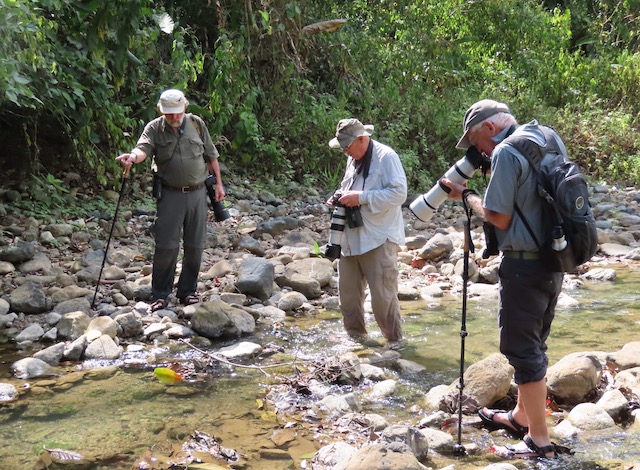
We had some serious odonate watchers in our group, which added a lot to the tour.
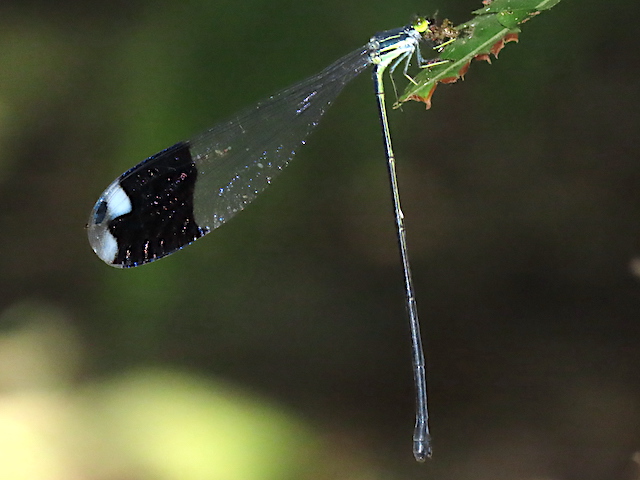
At La Selva we all enjoyed watching this normally quite shy Blue-winged Helicopter at close range as it munched on a spider, a truly fabulous damselfly and one of the largest in the world.
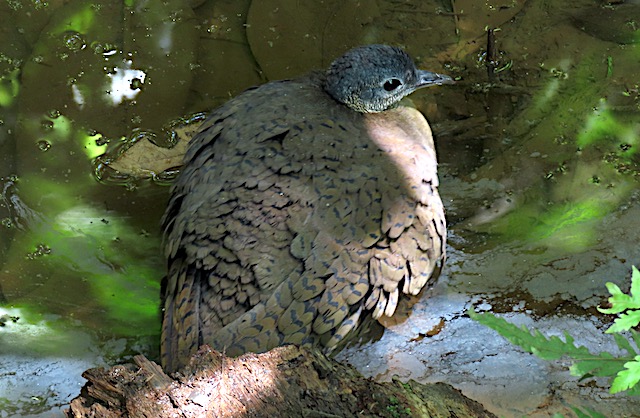
While looking for more damselflies, Norm spotted this Great Tinamou bathing below a footbridge, totally unafraid of our presence.
A short video, including the bathing Great Tinamou can be found at https://youtu.be/TsDV9MoY4UQ
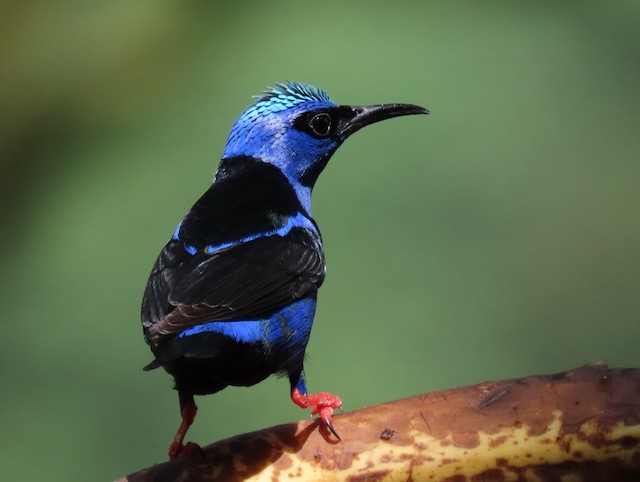
We also visited a few feeding stations throughout the tour, which offered some excellent photo opportunities. This incomparable Red-legged Honeycreeper was one of many colorful species at our last lunch stop.
February 23:
Steve Howell reports from our recent Honduras tour...
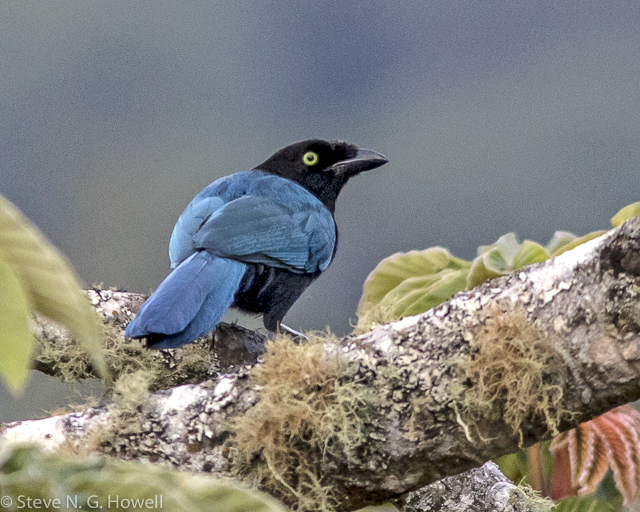
... which started on a great note with the regional endemic Bushy-crested Jay at our first hotel.
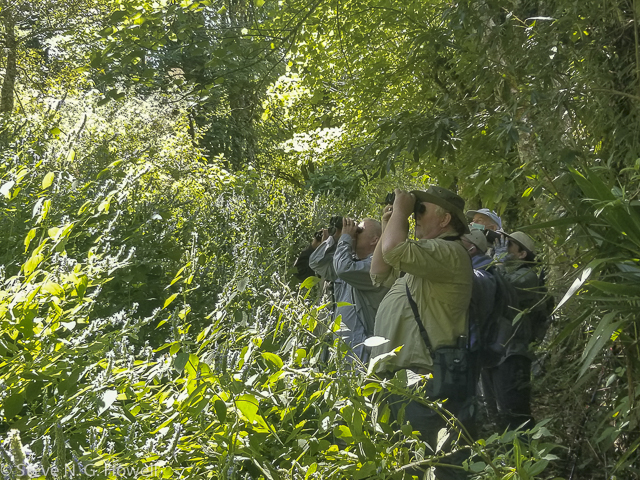
In the cloud forest of La Tigra Nation Park, here the watchers...
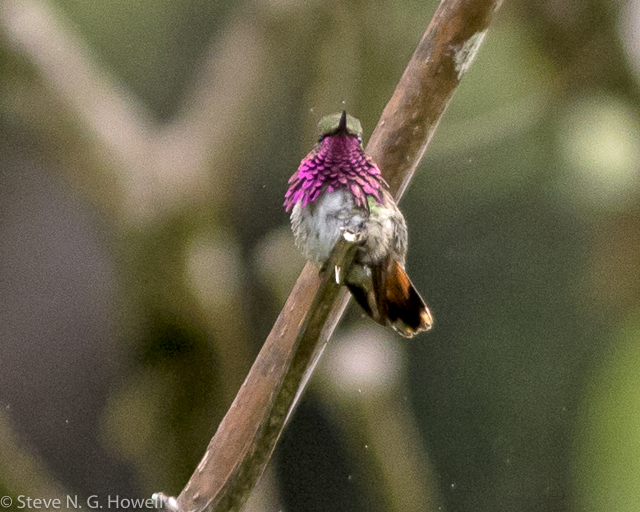
And here the watched, the tiny but dazzling Wine-throated Hummingbird.
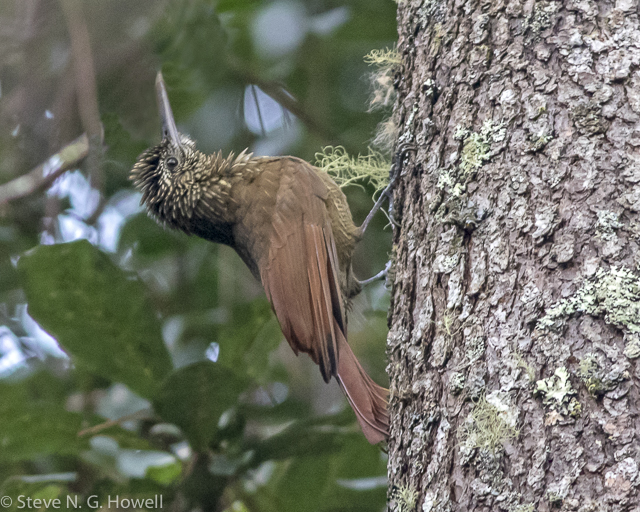
Arguably the rarest bird of the tour was the very poorly known puncticollis (appropriately meaning ‘spot-necked’) taxon of Black-banded Woodcreeper, endemic to northern Middle America and surely a species split—when somebody gets around to it.
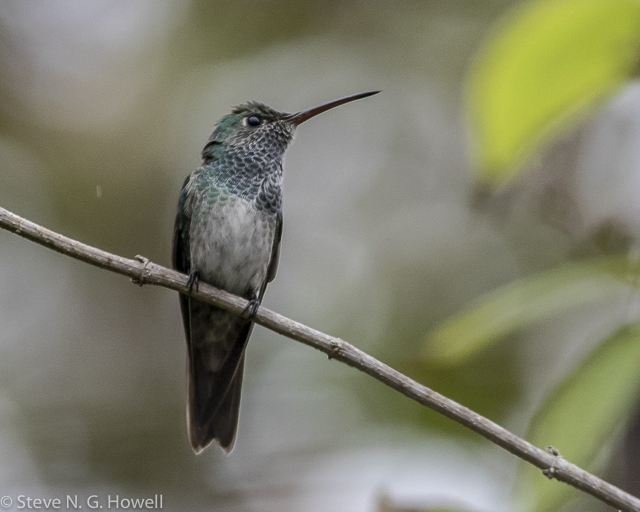
No birding trip to the country is complete without seeing Honduran Emerald, the only bird species endemic to Honduras.
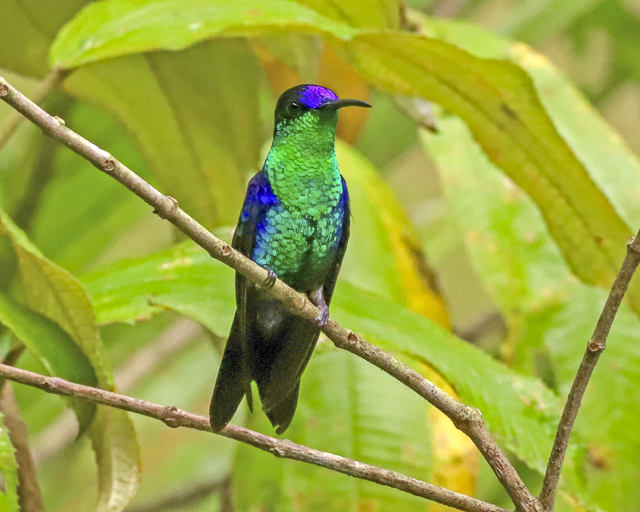
Although other hummers may be flashier, such as this male Crowned Woodnymph... Photo by tour participant Anthony Collerton
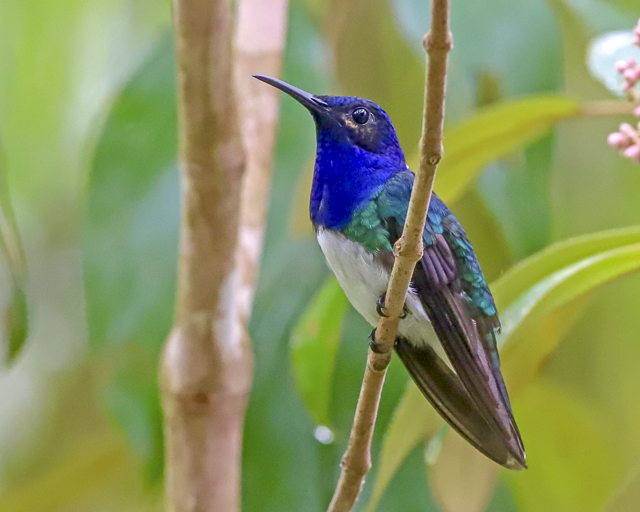
Or the simply stunning White-necked Jacobin. Photo by tour participant Anthony Collerton
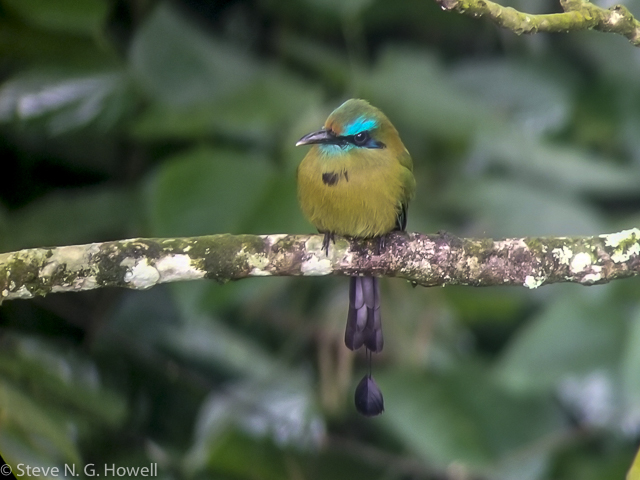
Honduras is the land of motmots, and we enjoyed excellent views of four species, including the local Keel-billed Motmot...
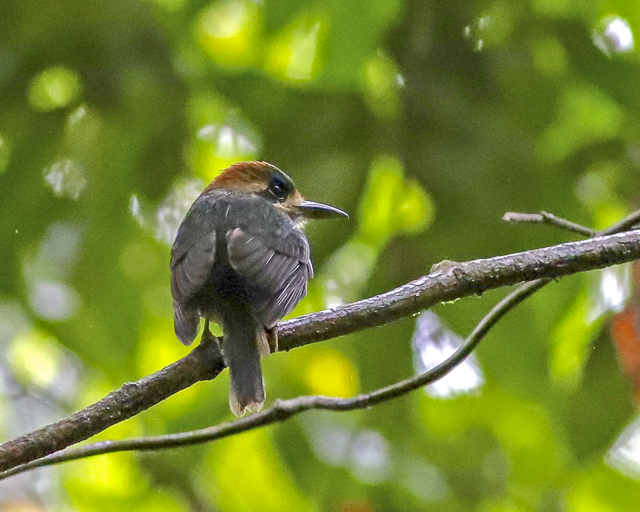
And the diminutive Tody Motmot. Photo by tour participant Anthony Collerton
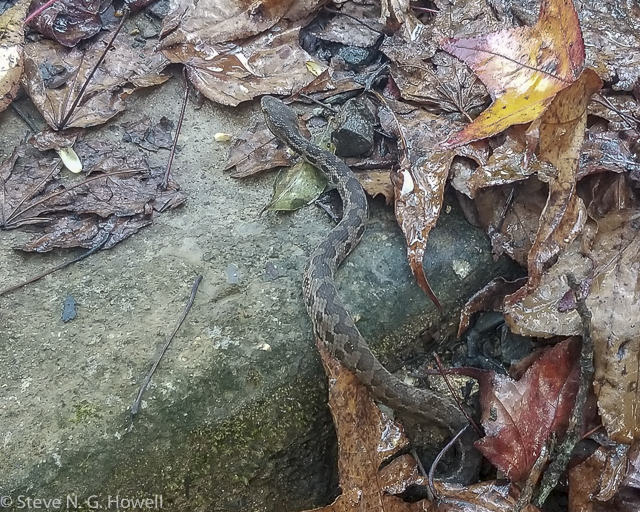
Non-avian highlights included this Wilson’s Montane Pit Viper at La Tigra...
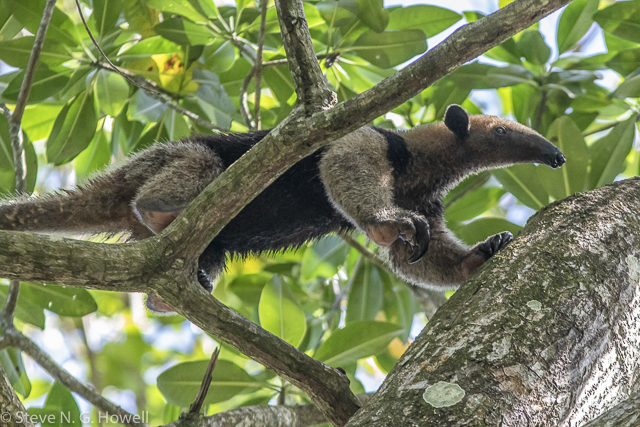
Prolonged views of this Northern Tamandua...
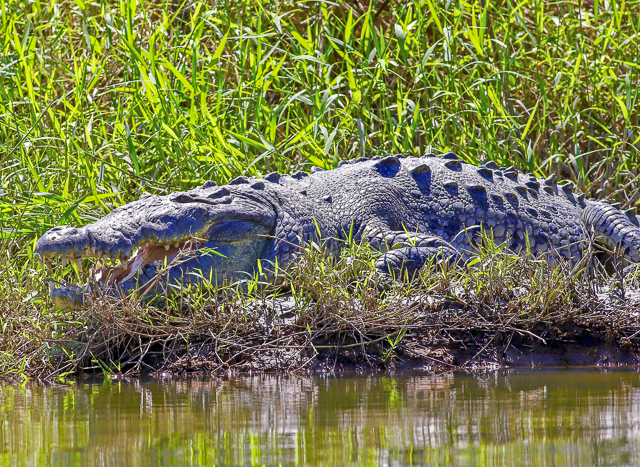
And an impressively large American Crocodile, too big to fit all of it in the frame! Photo by tour participant Anthony Collerton
February 1:
Jake Mohlmann reports from sunny Arizona.
We just wrapped up another successful WINGS Arizona in Winter tour through the southeastern portion of the state. Just over 1,000 miles of scenic roads were covered, exploring an assortment of habitats from the cactus-studded Sonoran Desert to the snow-capped peaks of the surrounding sky island mountain ranges.
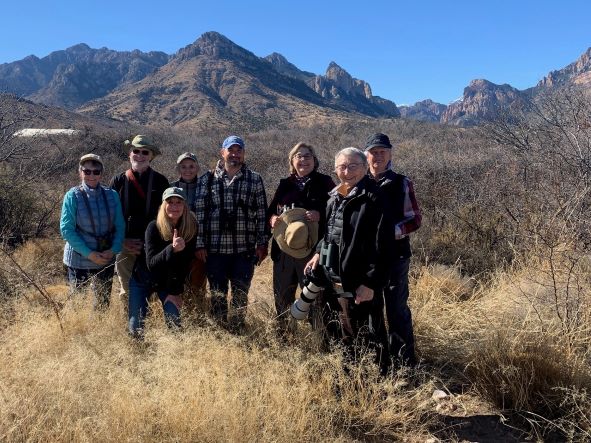
Our excited group ready to explore Cave Creek Canyon
A major highlight for the group was chasing down birds in the upper reaches of the Chiricahua Mountains. The 2-track that leads up to the pine forests here gave us a chance to find a major target bird for any North American birder. Eventually some call notes led us to a flock that contained our quarry as we enjoyed eye level views of a small group of Mexican Chickadees in the only place that’s publicly accessible to see this very local species.
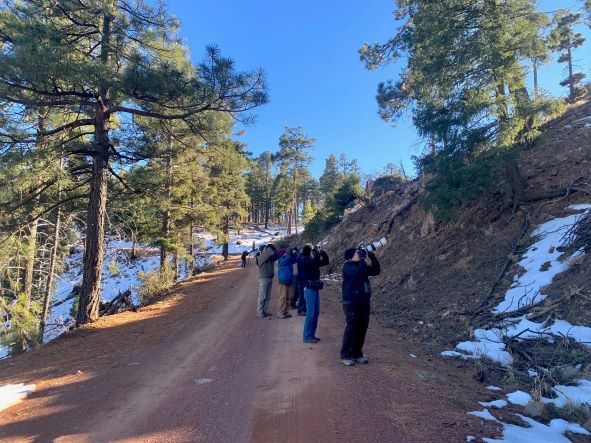
Birding the Chiricahua pine forests is the only accessible spot …
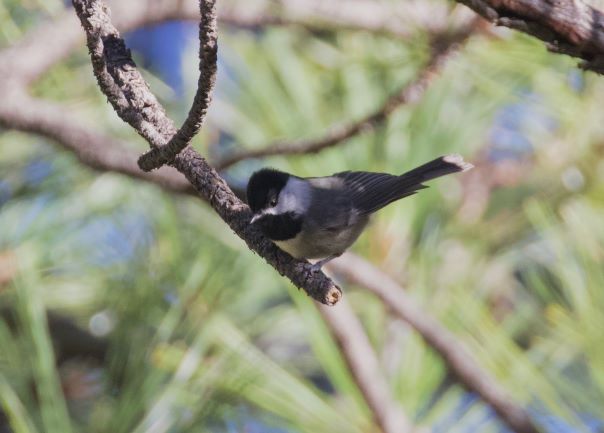
… to see the Mexican Chickadee, of which we saw 4.
Being based out of an extremely comfortable bed and breakfast for the week was a nice feature, and gave us refuge at the end of the days to have home cooked meals and a fireplace to sit next to for reviewing the checklist every night. It also gave us lots of time to enjoy the showy birds that call this part of the country home, such as numerous days viewing both female and bright male Pyrrhuloxias at the feeders.
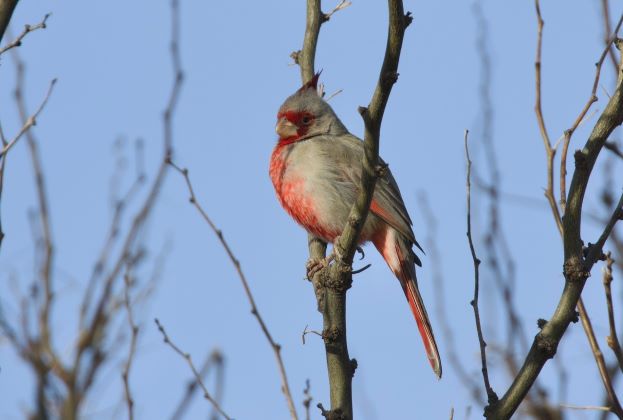
A male Pyrrhuloxia in the morning light.
To say the Sandhill Crane spectacle we witnessed was amazing would be an understatement. Our perfectly timed outing had us standing on a berm abutting a giant wetland where thousands of cranes came pouring in for hours, filling the skies of the giant Sulphur Springs Valley with a cacophony of bugling adults and whistling young.
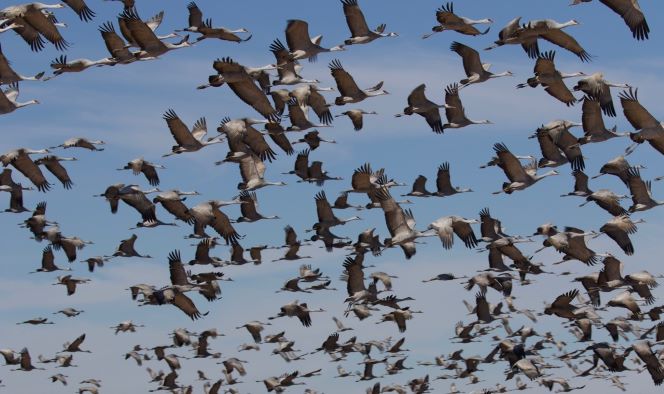
Sandhill Cranes filled the skies of Sulphur Springs Valley
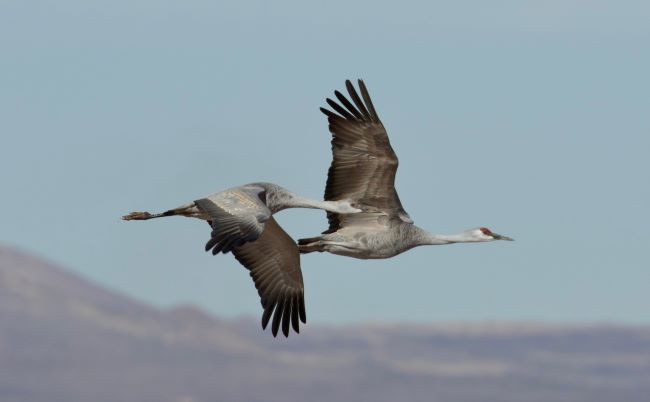
Both young and adult cranes flew by extremely close
Even the numerous parks around Tucson hold highlights this time of year. One never knows what will show up in these urban oases, but usually there’s something exciting to track down. As was the case this year when a couple of ‘pip pip pip’ notes led us right to the location of a wintering Greater Pewee seeking refuge from the wind near Reid Park, placed in the heart of the city.
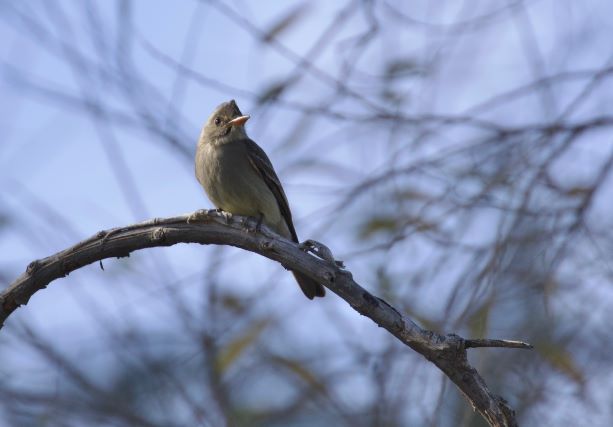
This Greater Pewee was utilizing a small pond in the middle of Tucson.
January 31:
Steve Howell reports from San Blas, Mexico
Steve is heading home after finishing two consecutive tours to this wonderful destination. Both tours were the same in that they were similar yet also quite different—you never see ‘everything’ on a single tour, but with two combined we really didn’t miss much.
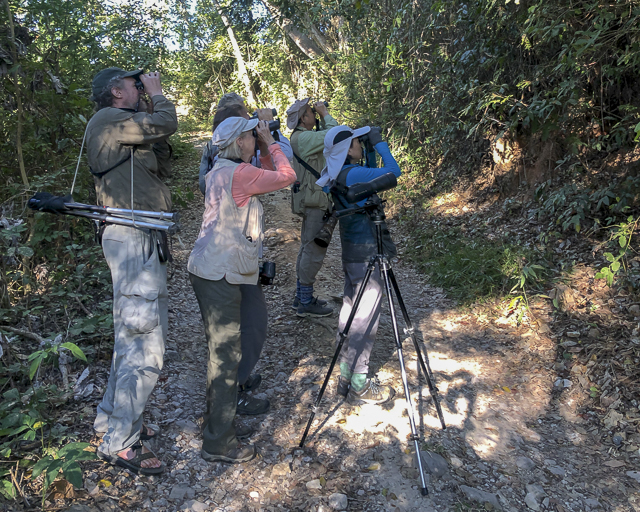
Just another day birding in tropical sunny Mexico (photo by Luke Seitz)
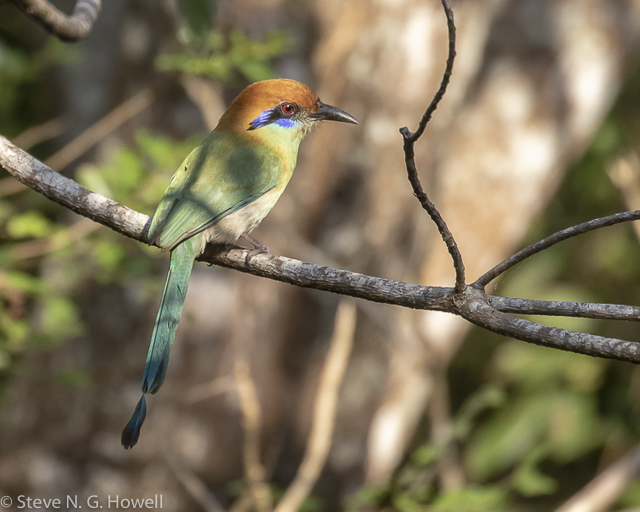
Highlights of both included classic species such as Russet-crowned Motmot
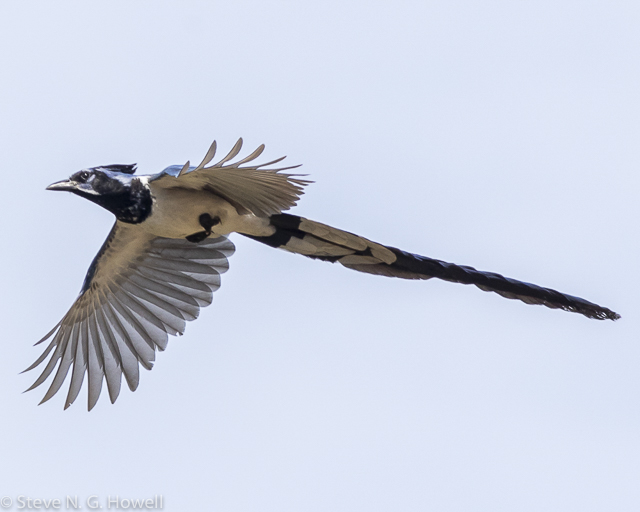
the stunning Black-throated Magpie-Jay
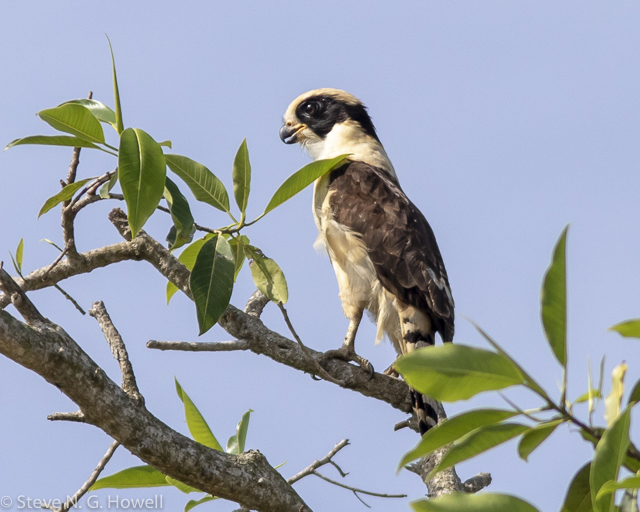
the handsome Laughing Falcon
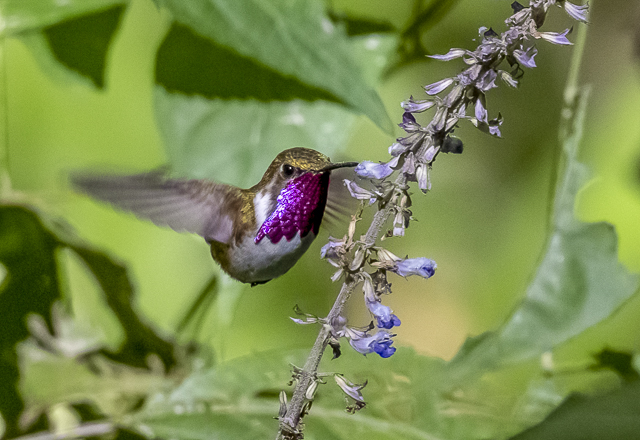
and the tiny Bumblebee Hummingbird. Photo by participant Li Li.
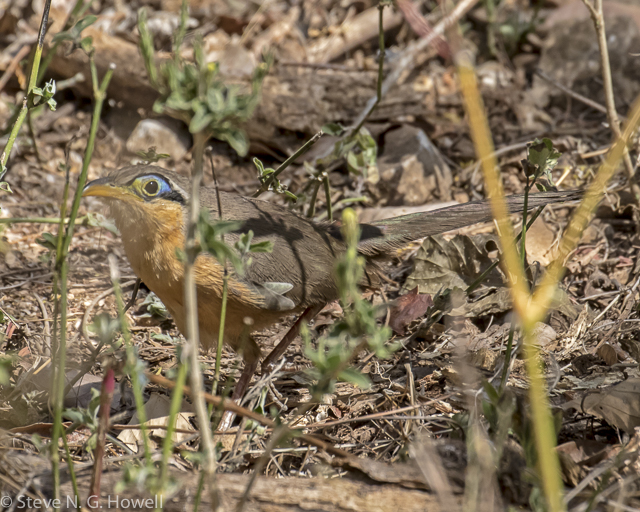
The first group enjoyed close studies of Lesser Ground-Cuckoo...
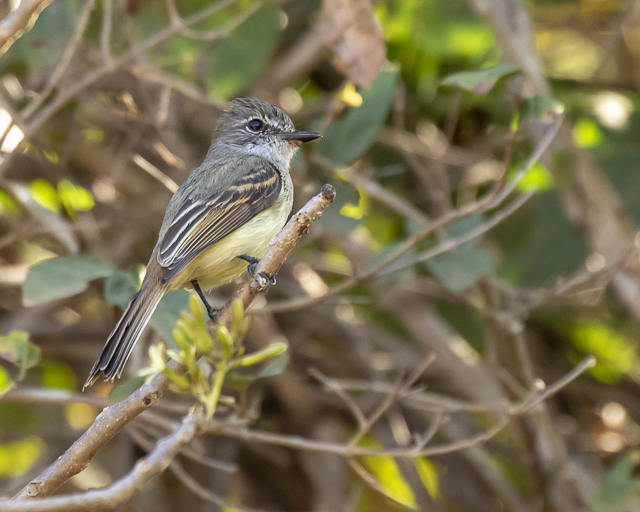
And the understated yet distinctive Flammulated Flycatcher
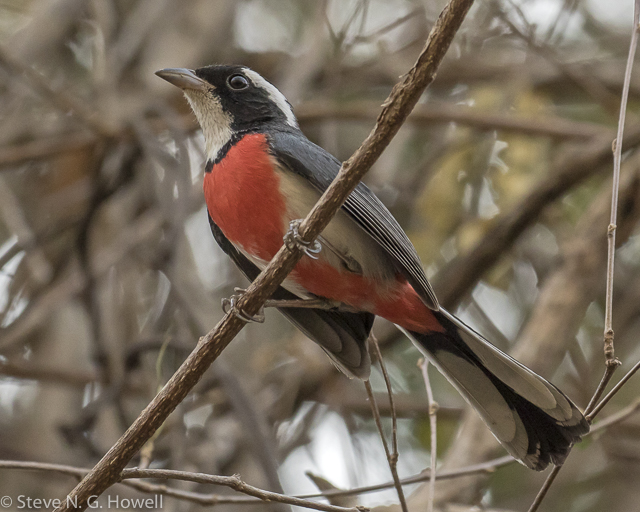
Whereas the second group drank in a point-blank, male Red-breasted Chat
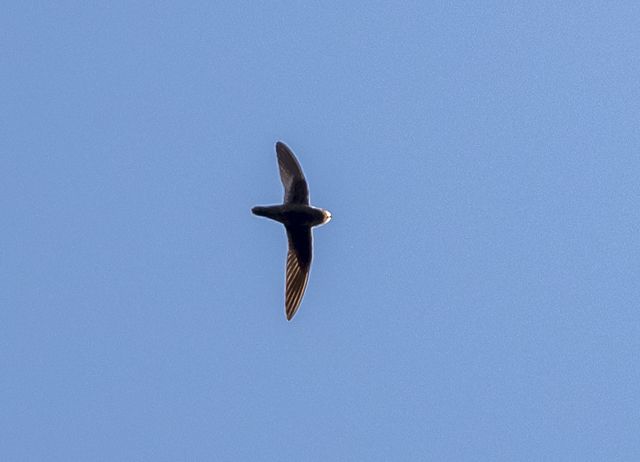
And was lucky enough to encounter the little-known White-fronted Swift, seen only a handful of times since being described as new to science in 1992. Photo by participant Li Li.
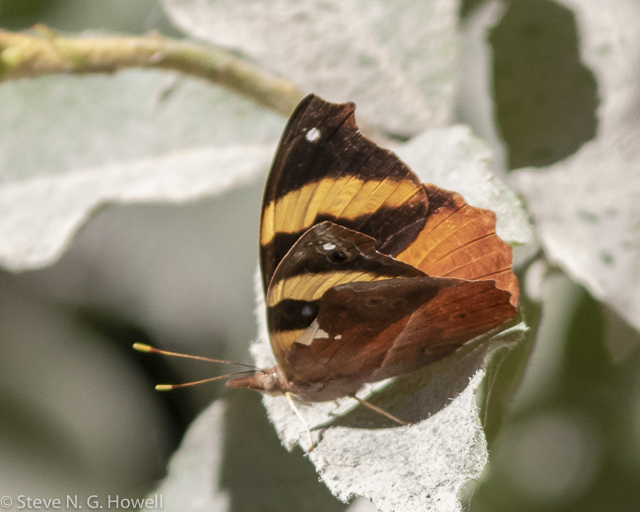
Non-avian highlights included numerous colorful butterflies, such as this Common Banner...
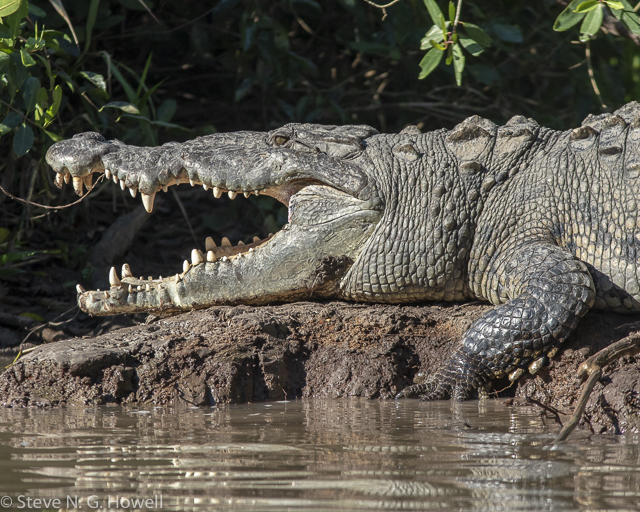
And some extremely large American Crocodiles.
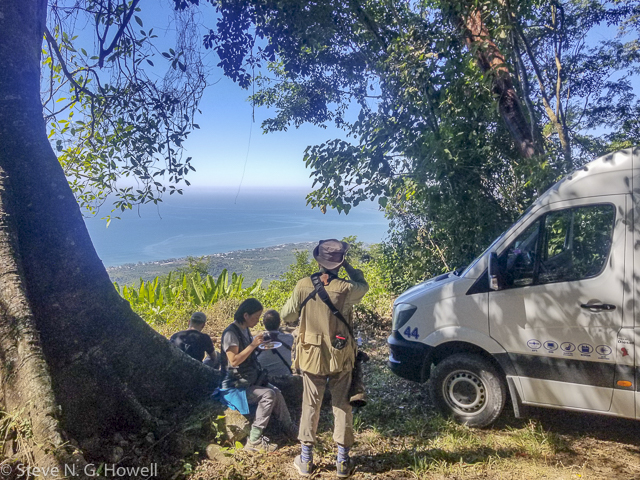
Here, our last picnic lunch in the field after a wonderful getaway to sunshine, great food, friendly people, and colorful birds before reluctant return to Covid madness in the “real world”
January 25:
Gavin Bieber just finished up a very enjoyable winter Florida tour
We began our winter Florida tour this year in Orlando, which allowed us access to the central and northern parts of the state which our normal spring tour doesn’t cover. On the famous Space Coast we connected with out of range Black-headed Gull and Cinnamon Teal, and enjoyed our first views of such iconic Florida species as Wood Stork and American Alligator.
A day trip up around Gainesville produced absolutely phenomenal views of an unusually cooperative Henslow’s Sparrow as well as close views of hunting Snail Kites, brassy coloured Fulvous Whistling Ducks and a seemingly inexhaustible number of Palm Warblers.
On the drive down to Fort Myers we cut through the middle of the state and were successful at tracking down a pair of stately Whooping Cranes, as well as this handsome Crested Caracara. This Painted Bunting and several Short-tailed Hawks put on a show in the Fort Myers area as well. Enroute to the deep south of the state we stopped in near the south end of Lake Okeechobee to look at a few Tricoloured Munias that seem to be nesting in the thick grasses that ring the lakeshore.
For the final leg of the trip we birded around the Everglades National Park and suburban Miami, where we finally had warm enough weather for a few lively insects like this handsome Halloween Pennant, as well as some decidedly tropical looking birds like Purple Gallinule and the introduced Red-whiskered Bulbul.
We covered quite a bit of ground during the week, seeing a wide array of Florida’s habitats and birds; 182 species to be exact. As always, Florida isn’t just about the birds, and this year we enjoyed excellent views of American Alligator, a distant frolicking pair of River Otter, lots of introduced but colourful lizards, a good number of butterflies (thanks Greg Greene), odonates and even a few fish! It was a welcome respite from the cold grey winter that gripped much of the country!
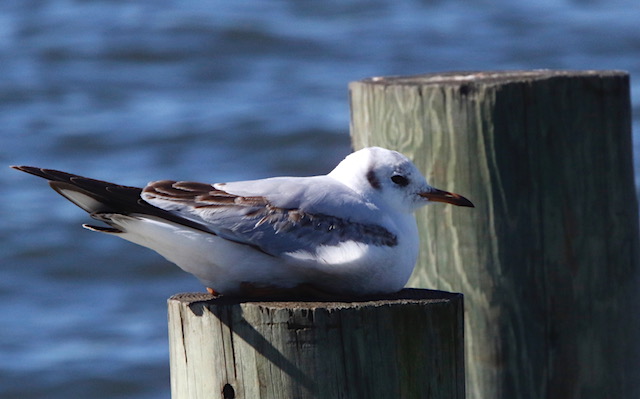
Black-headed Gull
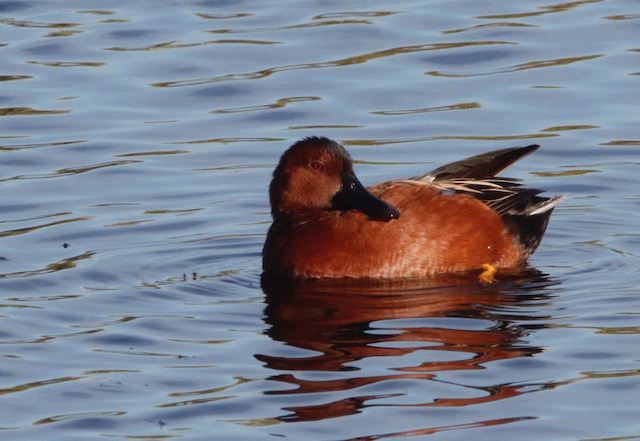
Cinnamon Teal
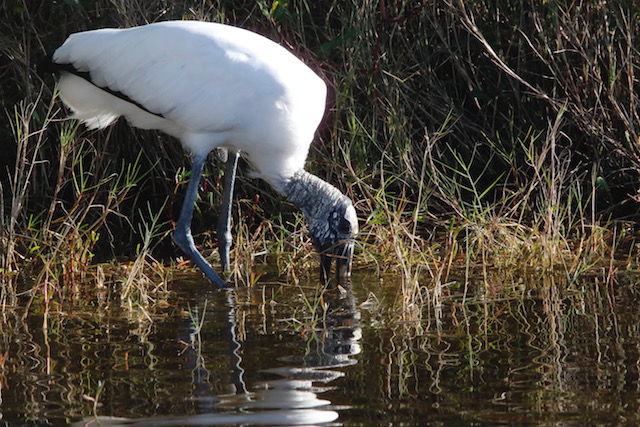
Wood Stork
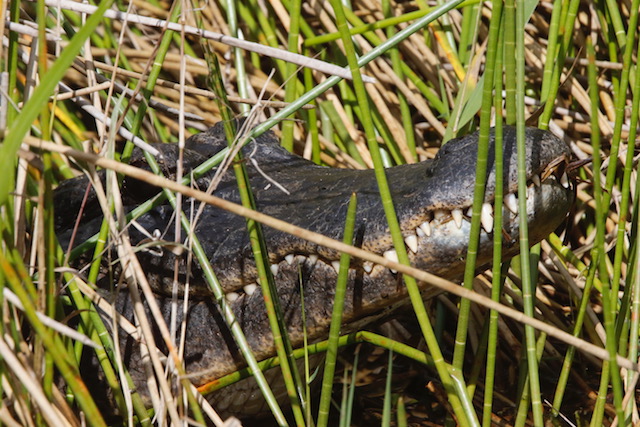
American Alligator
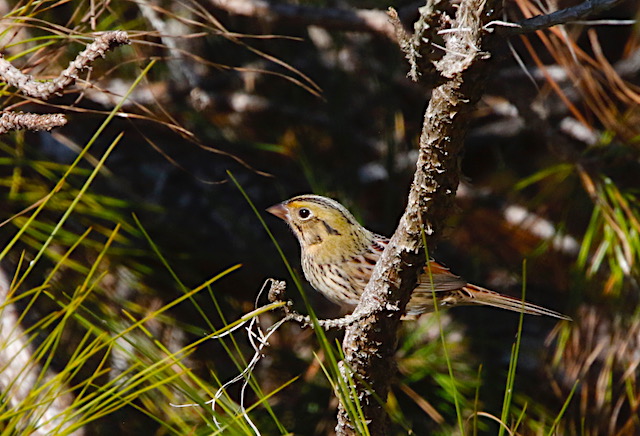
Henslow’s Sparrow
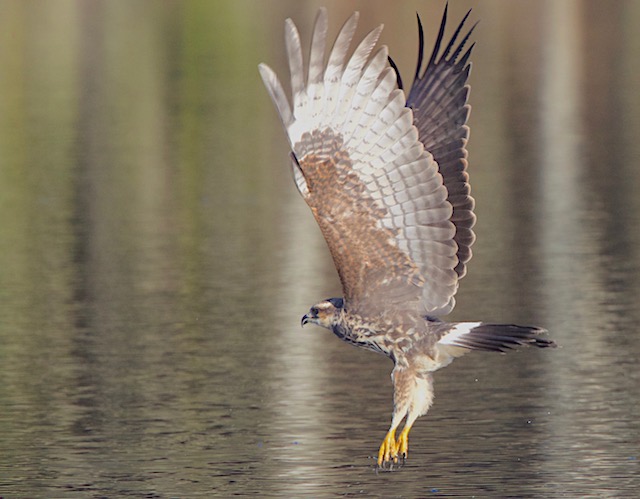
Snail Kite
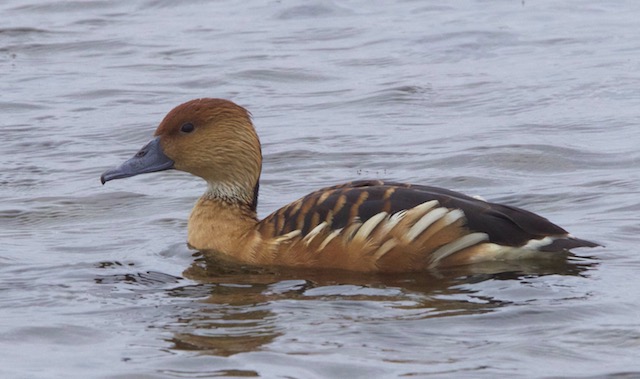
Fulvous Whistling Duck
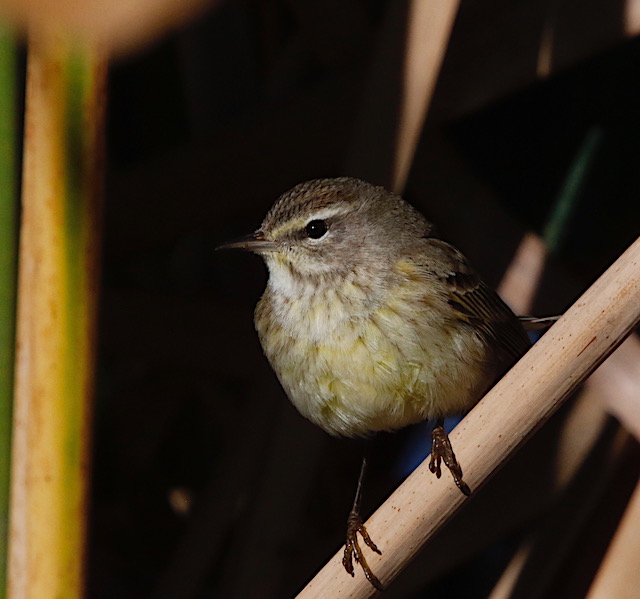
Palm Warbler
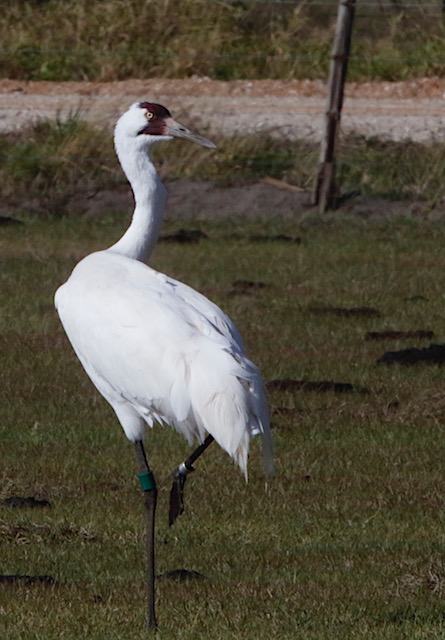
Whooping Crane
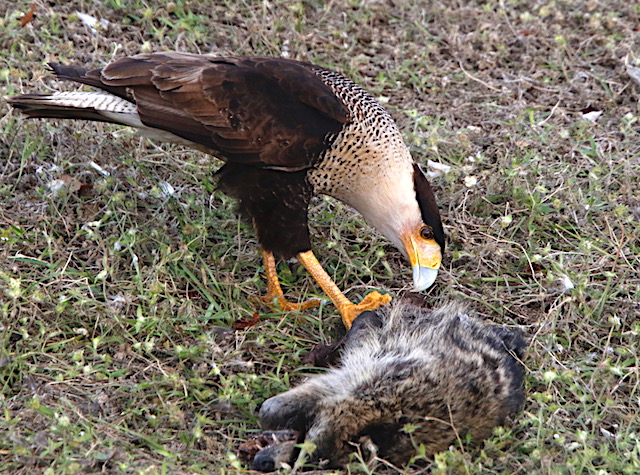
Crested Caracara
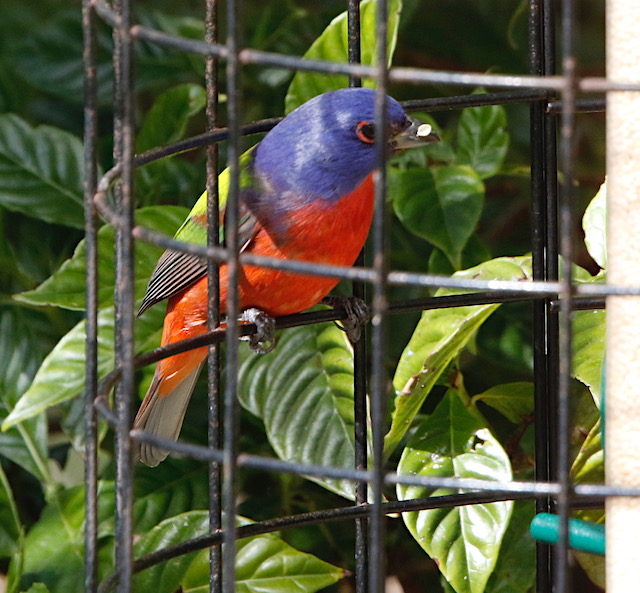
Painted Bunting
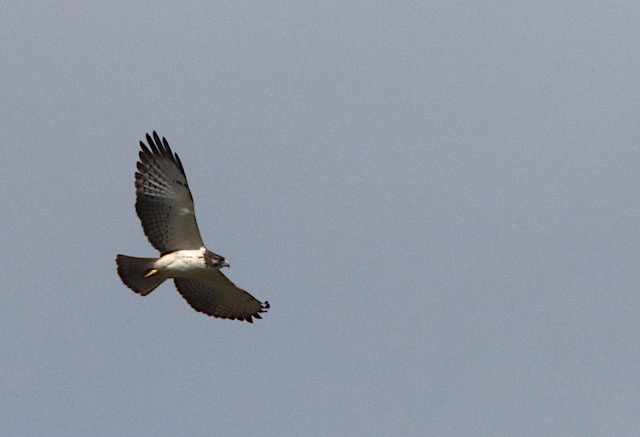
Short-tailed Hawk
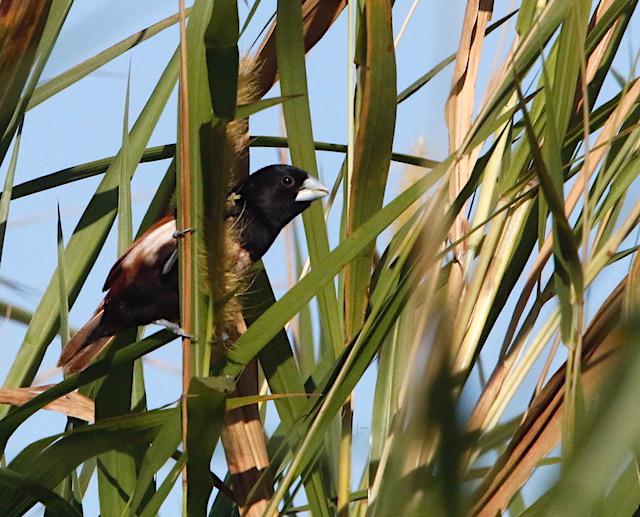
Tricoloured Munia
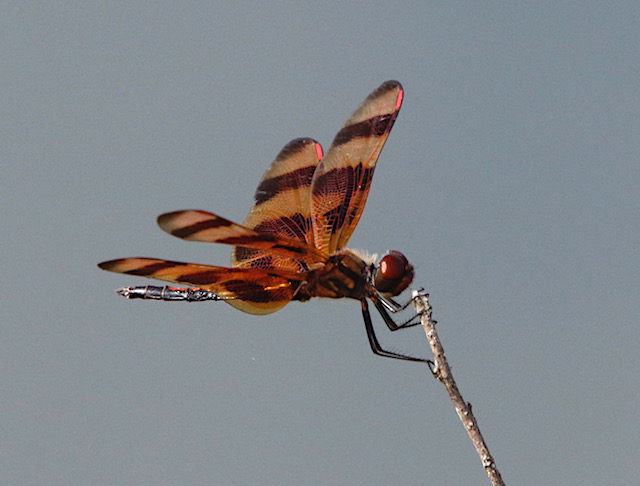
Halloween Pennant
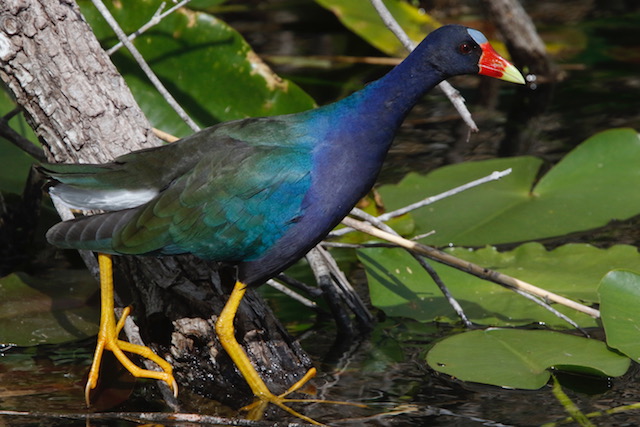
Purple Gallinule
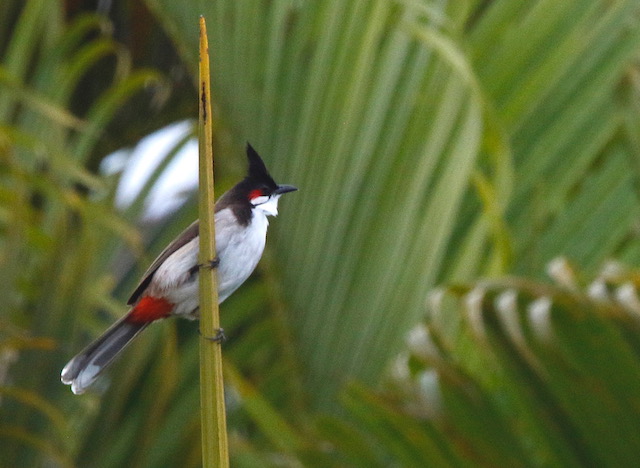
Red-whiskered Bulbul

